Japan is famous for many things – some of which are unique to this country alone. In this guide, we’re answering the question “what is Japan famous for?” with a roundup that’s also packed with practical travel tips.

Japan is one of the most unique countries in the world. It is a country both deeply rooted in tradition as well as one of the world’s leaders in technology and innovation.
We can’t think of any other country with such a blend of both old and new. Peace as well as chaos.
If you find yourself wondering, What is Japan famous for? the answer isn’t as straightforward as you might think.
Japan isn’t famous for just one thing. Rather, Japan is famous for dozens of things that are unique to this country, many of which can’t be found elsewhere.
One thing we love about Japan is that it speaks to many different types of travelers looking for different things.
- Love history? You’ll enjoy exploring Buddhist temples and Shinto Shrines.
- Are you a foodie? There is so much cuisine to explore… Sushi, ramen, tempura, tonkatsu, just to name a few.
- Want to explore modern Japanese culture? Anime, theme cafes, and kawaii culture will be right up your alley.
- Looking for peace and relaxation? Soak in an onsen or wander one of Japan’s many gardens.
If you’re really keen to figure out what Japan is most famous for, keep reading because we’ve rounded up a very eclectic list (some of which you may have never heard of before).
We’ve also included practical tips so you can fully immerse yourself in the best parts of Japan.
Psst! We have a list of iconic landmarks in Japan that’s sure to give you some inspiration for your itinerary!
Top things Japan is famous for
If we were to list out the very top things Japan is most well-known for, this is what we’d say (in no particular order):
- Ramen
- Mount Fuji
- Cherry blossoms
- Sushi
- Manga & anime
- Shinkansen trains
- Temples & shrines
- Matcha
- Big, crazy cities
- Japanese gardens
There’s a lot more that Japan is famous for, so keep scrolling to see them all.
Plus, we’re sharing a few things we personally think Japan should be famous for but most foreign tourists are surprised to know (we sure were!).
Article contents
1. Ramen
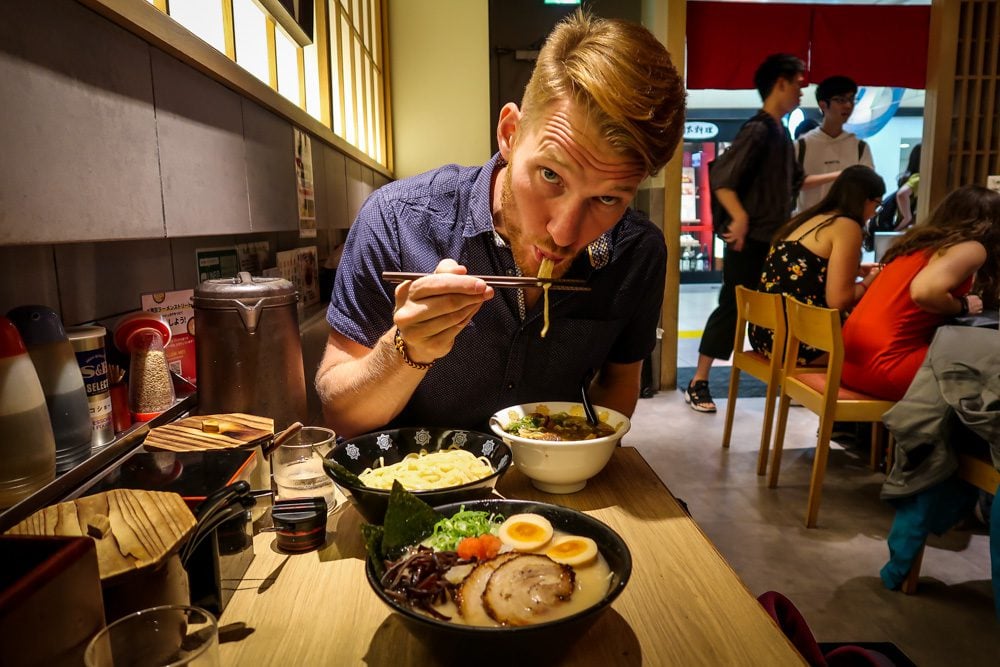
Quick facts
- Slurping your ramen is considered polite. It shows that you’re really enjoying it, plus it helps cool it down. So go ahead, slurp away!
- Each ramen shop has its own flavors and specialties. Consider this your excuse to eat it as often as you can!
- Starting at ¥500, ramen is a great budget meal. Even the fanciest bowl shouldn’t be much more than ¥1,200.
- Ramen is considered somewhat “fast food”, but don’t confuse it for instant noodles.
Ramen is one of the most famous Japanese foods (and quite possibly my personal favorite!).
Now, if you read the word “ramen” and pictured those sodium-laden packages of dried noodles you lived off of during your college years, stop that right now. The instant version doesn’t compare to the rich and satisfying “real thing”!
In Japan, the noodles are freshly made and the broth has a surprising depth of flavors. Top that with thin slices of tender pork, a soft boiled egg cooked to perfection, and a generous pile of green onions for an explosion of flavors and textures.
Okay, gotta stop now. My mouth is watering.
How to order ramen
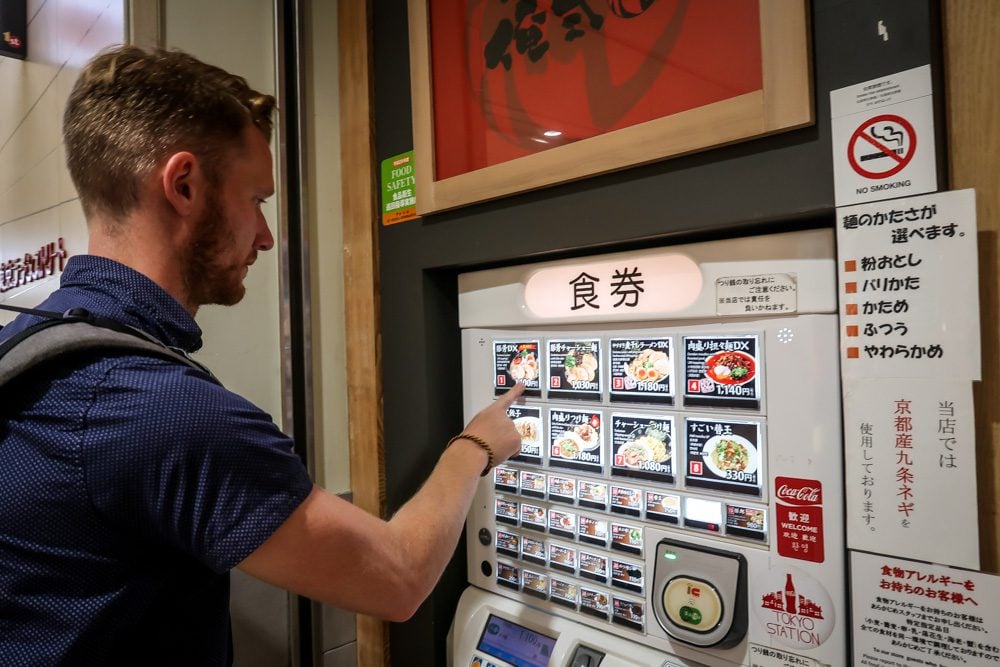
Most ramen shops have a vending machine of sorts, from which you will purchase a ticket before entering the restaurant at all. Hand the slip to one of the workers and take a seat.
Ramen is usually a fast food type of meal, and shops get absolutely packed during meal hours. This means each seat is valuable, so most ramen shops do not allow for two people to split one dish. If you are traveling with a partner, both of you should order something.
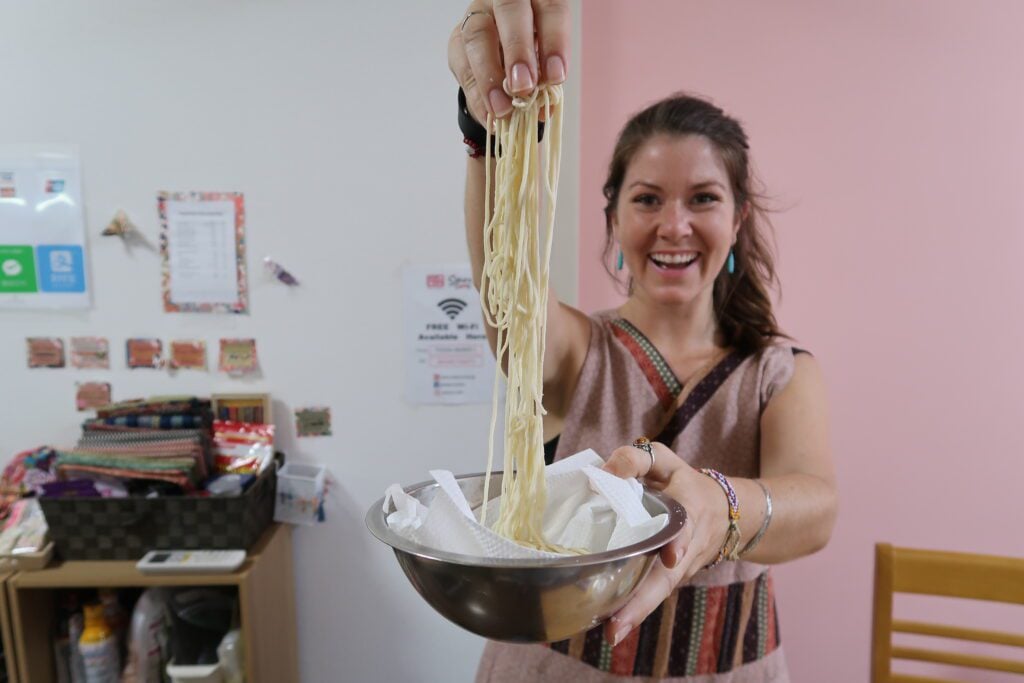
Travel Tip: Why not make your own in a ramen noodle cooking class! We made our own noodles from scratch, and prepared three different types of ramen, each with its own homemade broth. Bonus: This cooking class can be altered for vegetarians!
→ Related: Find out where to find the BEST ramen in Tokyo
2. Mount Fuji
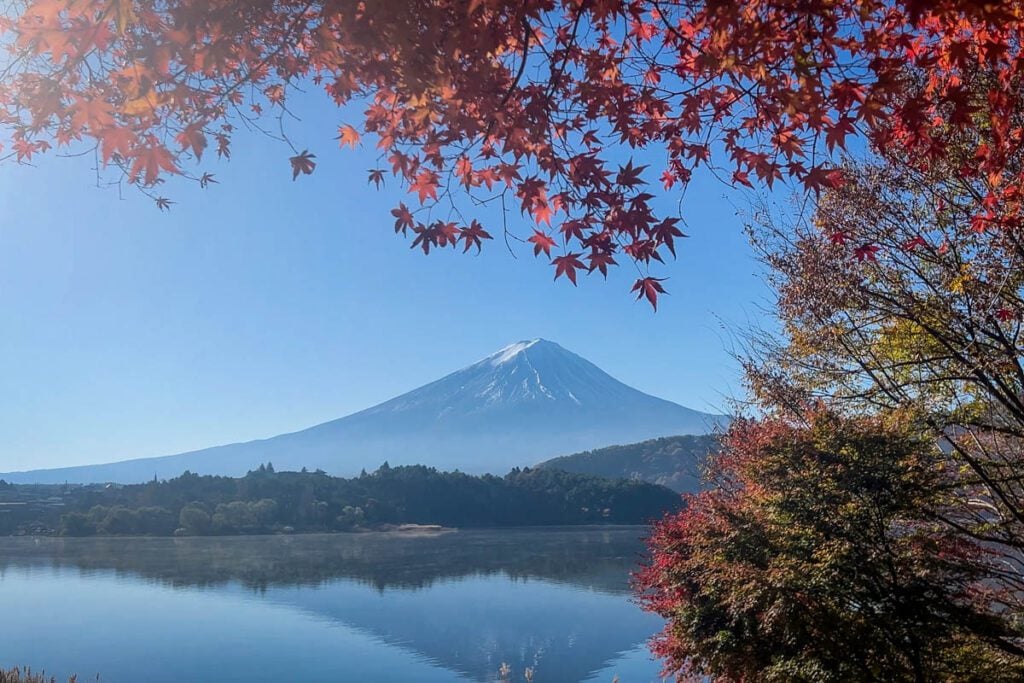
Quick facts
- Mount Fuji is a sacred mountain worshiped by both Shinto and Buddhist religions.
- At 12,388 feet (3,776 meters), this is Japan’s tallest mountain (though it’s technically a volcano).
- Fuji is one of the most climbed mountains in the world, though it’s only open to hike from July through September.
When you think about Japan, the majestic peak of Mount Fuji is probably one of the first images that comes to mind. In fact, if we had to put this list in order of the most famous things in Japan, Fooj would be very close to the top.
Seeing Mount Fuji in all her glory tops many travelers’ Japan bucket lists, and for good reason – this iconic mountain is almost synonymous with Japan and is truly incredible to see in person.
We have a Mount Fuji day trip guide that is packed with info on how, when, and where to catch a glimpse of the famous peak, as well as other fun things to do in the area and some mind-blowing facts we’re betting you didn’t know!
Best places to see Mount Fuji
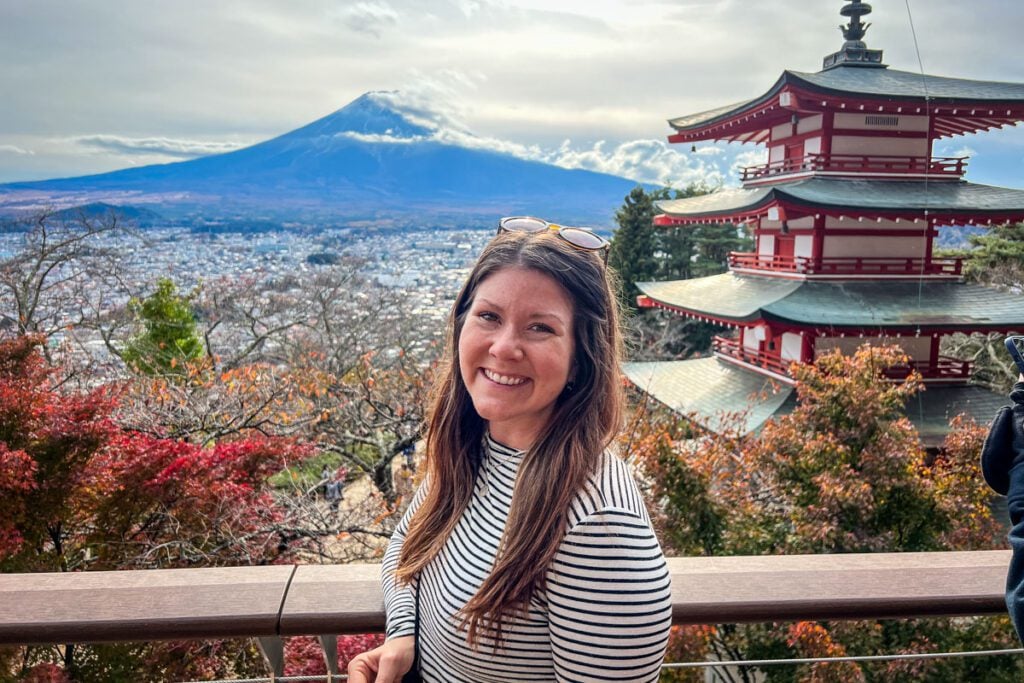
On a clear day, you can glimpse Mount Fuji in the distance throughout Tokyo. However, if you want a closer up view, here are some of the most iconic:
- Fuji Five Lakes: each of the lakes in this stunning region has its own unique perspective of Mount Fuji.
- Lake Kawaguchiko: on a calm day, the image of the peak mirrored in the water is a sight to behold.
- Arakurayama Sengen Park: one of the most sought-after frames with Chureito Pagoda set against the backdrop of Mount Fuji.
- Hakone: This small town situated on Lake Ashin is a great place to peep the peak and relax in an onsen at one of the many guesthouses.
Travel Tip: If you’re in Hakone, be sure to eat the famous black eggs. They’ve been hard-boiled in the nearby hot springs and are said to lengthen your life by 7 years. We shall see!
But hold up! Before you go, we must warn you: Mount Fuji is known for being shy.
More often than not, the iconic peak is shrouded in cloud or fog, invisible even from nearby viewpoints. In fact, the mountain was completely hidden in the clouds during our first two visits to Japan.
But on our third trip, she proudly showed her face and it was worth the wait. We finally got to see for ourselves what all the hype is about!
Best time to see Mount Fuji
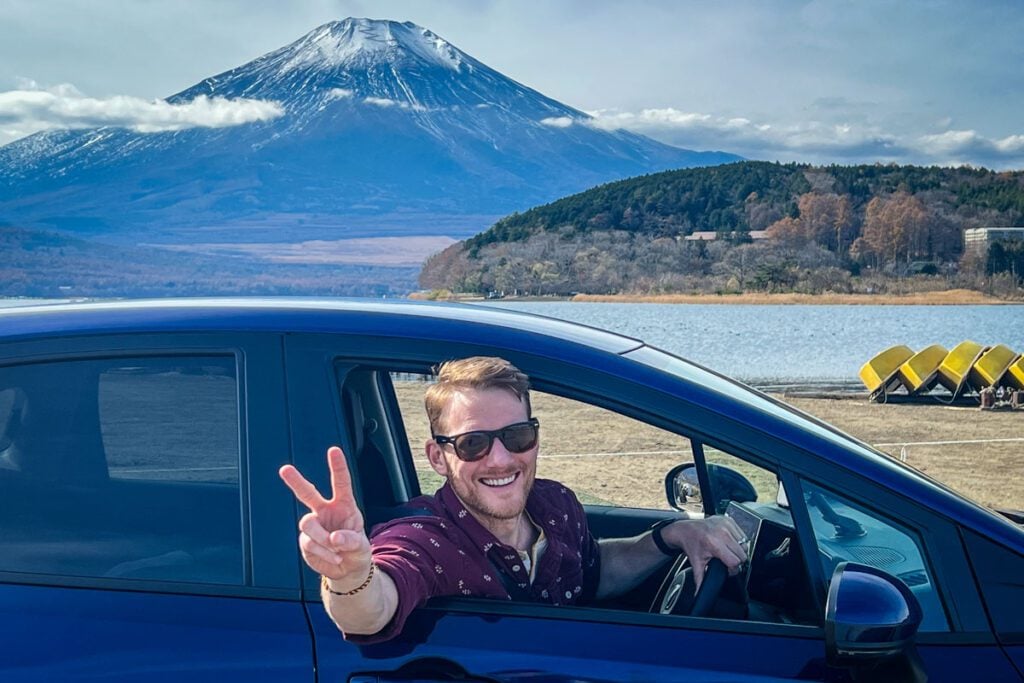
Statistically speaking, you will have the best chance of seeing Mount Fuji between the months of October and February, with the worst chance of visibility being in July.
That said, nothing is promised when it comes to weather.
Case in point, our first visit to Japan was in early February (aka a month with one of the best chances of visibility), and Mount Fuji was completely covered in fog during our entire stay. And yet, we know people who’ve seen her peek out in July, when visibility is said to be at its worst.
Moral of the story: It is never guaranteed that you’ll be able to see this notoriously shy mountain, so be sure to have a few cloudy day activities in mind (and a good attitude!) just in case.
Psst! Find out the best time to visit Japan based on seasonal weather patterns in each region and your personal travel style.
3. Cherry Blossoms (Sakura)
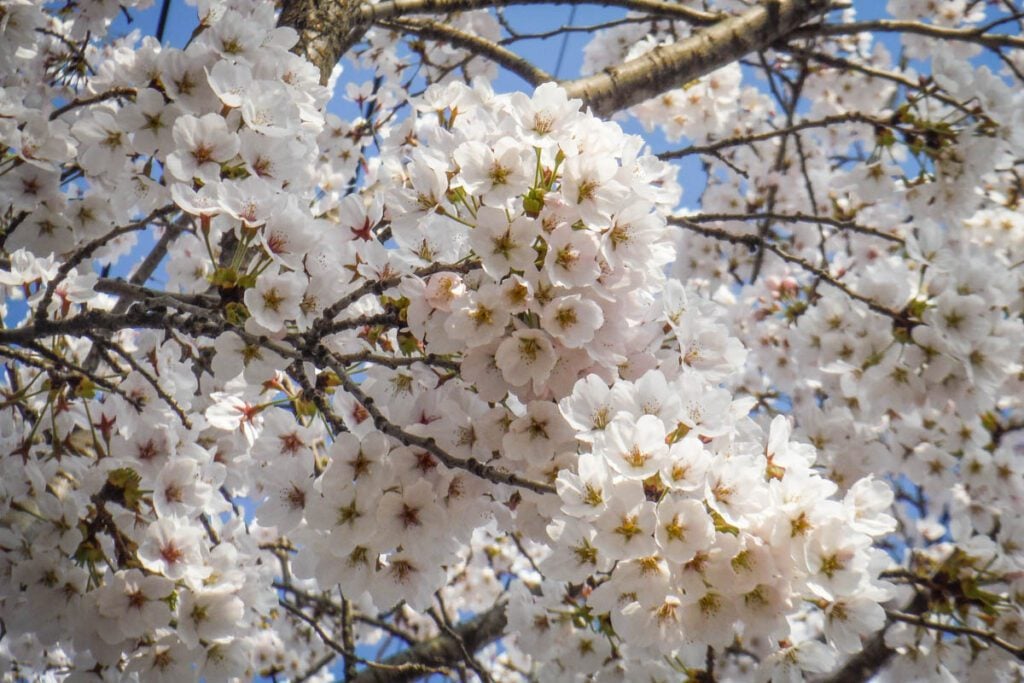
Quick facts
- Cherry blossoms in Japan are known as sakura.
- Hanami, or “flower viewing”, has been a tradition in Japan for centuries.
- Cherry blossoms peak in April. This is also peak tourist season in Japan.
It’s no secret that Japan is renowned around the world for the breathtaking pink and white cherry blossoms that sweep across the country each spring.
Delicate pastel petals drift in the warm breeze, carpeting the ground and creating soft, cloud-like canopies overhead. The word dreamy doesn’t even begin to cover it.
The art of viewing cherry blossoms, called hanami, has been ingrained in Japanese culture for centuries, tracing back to the Heian period more than 1,000 years ago. While the petals’ biggest draw is their beauty, Japanese literature, poetry, and art celebrate sakura season as allegory for life, death, and rebirth.
Now, it’s a worldwide phenomenon, with people flocking from all corners of the globe to witness the seasonal event.
4. Sushi

Quick facts
- Sushi didn’t actually originate in Japan, but in Southeast Asia.
- Sushi is not always made with raw fish; rather, sushi refers to vinegared rice served with other ingredients.
- In Japan, sushi chefs have years of intense training so they can detect anything that could be wrong with a fish.
Though sushi is a keystone of Japanese cuisine, the method of mixing rice with vinegar to preserve fresh fish actually originated in Southeast Asia. Nevertheless, sushi has become synonymous with Japan – maybe even more so than ramen.
You just can’t go to Japan and not try sushi. It would be like going to Italy and not eating pasta!
Basic types of sushi
- Maki: the most common type of sushi; a seaweed sheet wrapped around rice and fillings and sliced into disks.
- Uramaki: essentially the same as maki rolls, uramaki is “inside out” with the rice on the outside.
- Nigiri: one ingredient (typically fish or prawn) served atop sushi rice.
- Temaki: also called “hand rolls”, you make this type of sushi by rolling the fillings inside a nori (seaweed) sheet into a cone shape.
Travel Tip: If you dip nigiri in soy sauce, it’s proper etiquette to dip the fish side so that the rice doesn’t fall apart and eat it upside down, with the fish touching your tongue.
Sushi Experiences in Japan
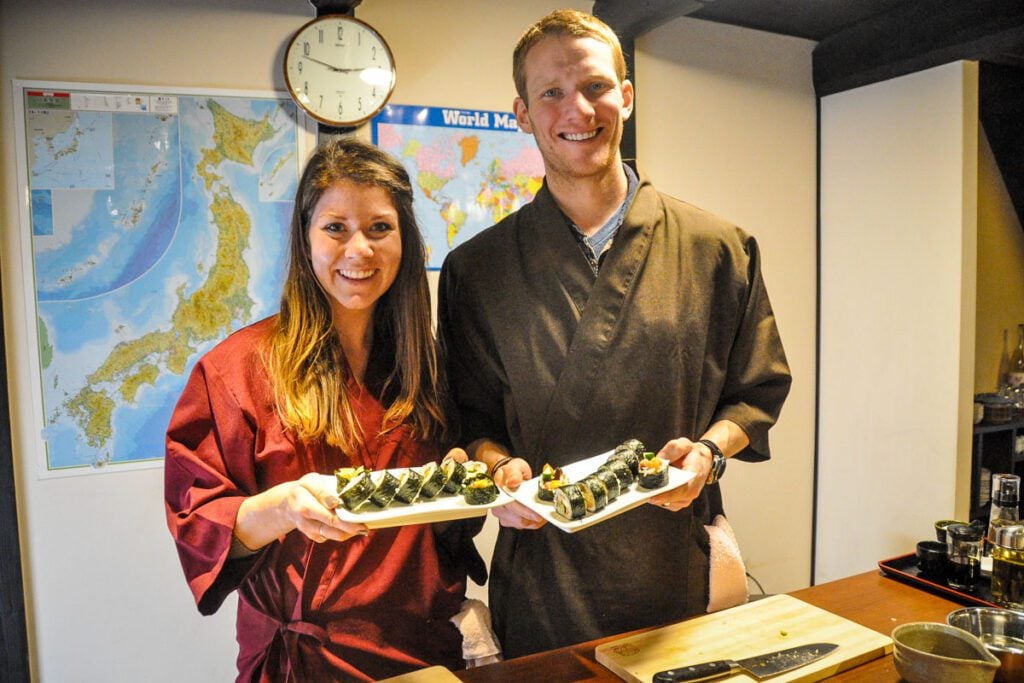
Compared to other meals in Japan, sushi is not all that expensive. Plus, there are options suitable for vegetarians and vegans, so order it often!
- Sushi-making class: We took a sushi-making class and had a great time learning about the ingredients used (many of which we never would have guessed!).
- Conveyor belt restaurant: This is where you can pick each piece off the moving counter beside you. These restaurants are typically a great option for budget travelers!
- Kombini (convenience store) sushi: Another good budget option, convenience stores in Japan have ready-made sushi that is actually pretty damn good! (And definitely not as sketchy as it sounds, I promise.)
- Fish markets: This is where you can enjoy a sushi breakfast (yep, breakfast!) made from fish that was swimming just hours before – can’t get more fresh than that! There are fish markets around the country, but these are some of the most famous:
- Tsukiji Market, which is the old (and more authentic feeling) market.
- Toyosu Market is where fish auctions now take place. It is super clean and modern, but lacks the old school character of the Tsukiji Market.
- Kanazawa is a seaside town with a famous fish market as well!
5. Manga & Anime
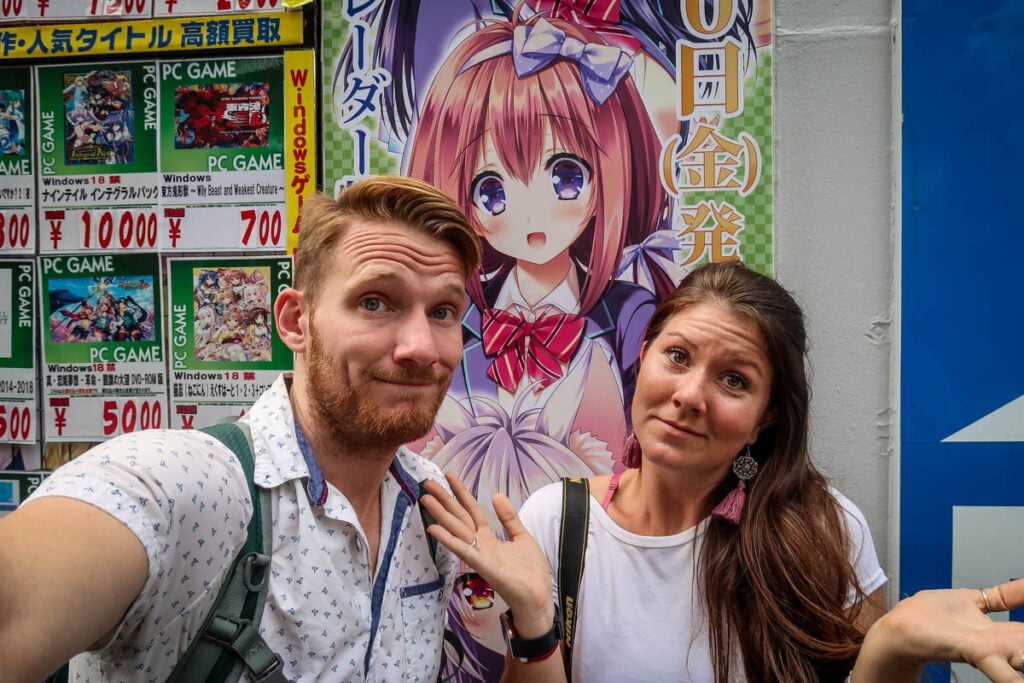
Quick facts
- In Japanese, manga refers to all types of animation, cartoons, and comics. But in global popular culture, the term manga is mainly for Japanese print cartoons.
- Conversely, “anime” refers to Japanese cartoon films and shows (animated = moving; make sense?).
Anime and manga are another staple of Japanese pop culture that has become a worldwide sensation.
Popularity of the genre began to really take off around the late-90s to early-00s, with Pokémon debuting in 1997 and legendary filmmaker Hayao Miyazaki earning an Academy Award in 2003 for Spirited Away. (Note: some people don’t consider Pokemon to be “true anime” – what are your thoughts?)
From Miyazaki’s long-beloved Studio Ghibli films (Howl’s Moving Castle, Princess Mononoke, My Neighbor Totoro) to recent Netflix adaptations, anime and manga attract fans of all ages and from all walks of life.
Travel Tip: If you’re into anime and manga, head to the Akihabara neighborhood of Tokyo. You’ll find colorful buildings, theme cafes, cosplayers, and plenty of shops and museums to immerse yourself in the fandom!
6. Shinkansen (bullet trains)
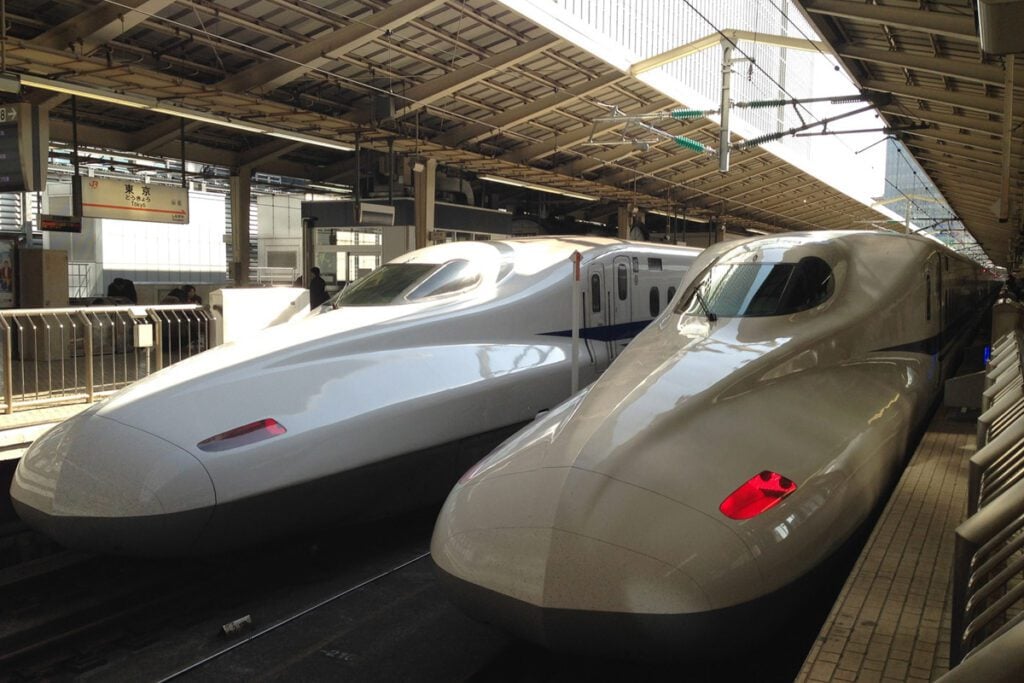
Quick facts
- Shinkansen reach operating speeds up to 320 km (200 miles) per hour.
- There are 9 Shinkansen lines in Japan.
- The Japan Rail Pass covers all Shinkansen trains.
Even before the 2022 Brad Pitt movie, Japan’s “bullet” trains were famous not only for their impressive speed, but for their cleanliness and efficiency as well.
Travel Tip: Though it’s considered rude to eat on most public transportation in Japan, it’s perfectly fine on Shinkansen trains. Read more about Japanese etiquette here.
7. Temples and shrines
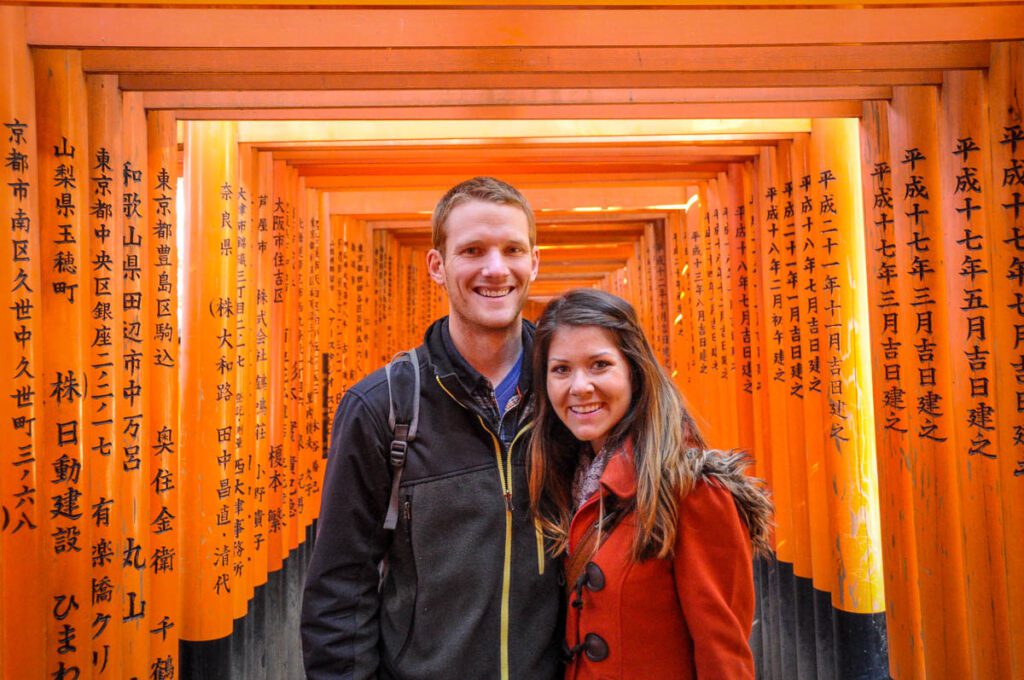
Quick facts
- Japan’s main religions are Shinto and Buddhism.
- Shrines are Shinto. You can recognize them by their torii gates.
- Temples are Buddhist and often have a statue of Buddha, incense burners, and sometimes an attached cemetery.
There are countless shrines and temples around Japan, from the ultra-famous to the small neighborhood sites for locals to visit regularly. Seeing a few of each during your trip to Japan is one of the best ways to get a feel for the country’s culture and religion.
Famous temples & shrines
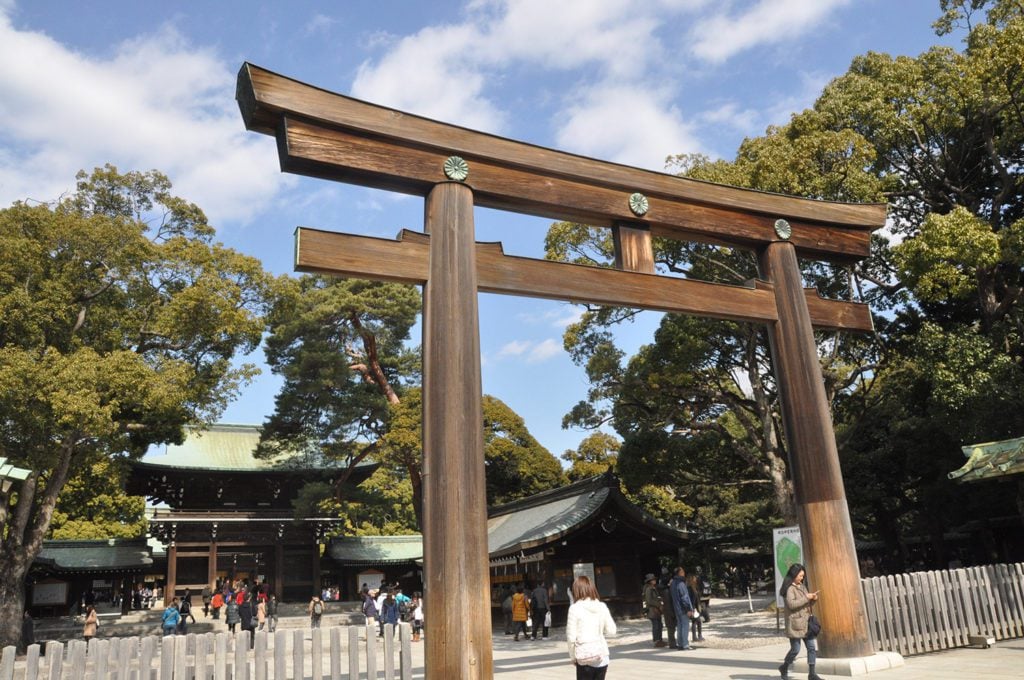
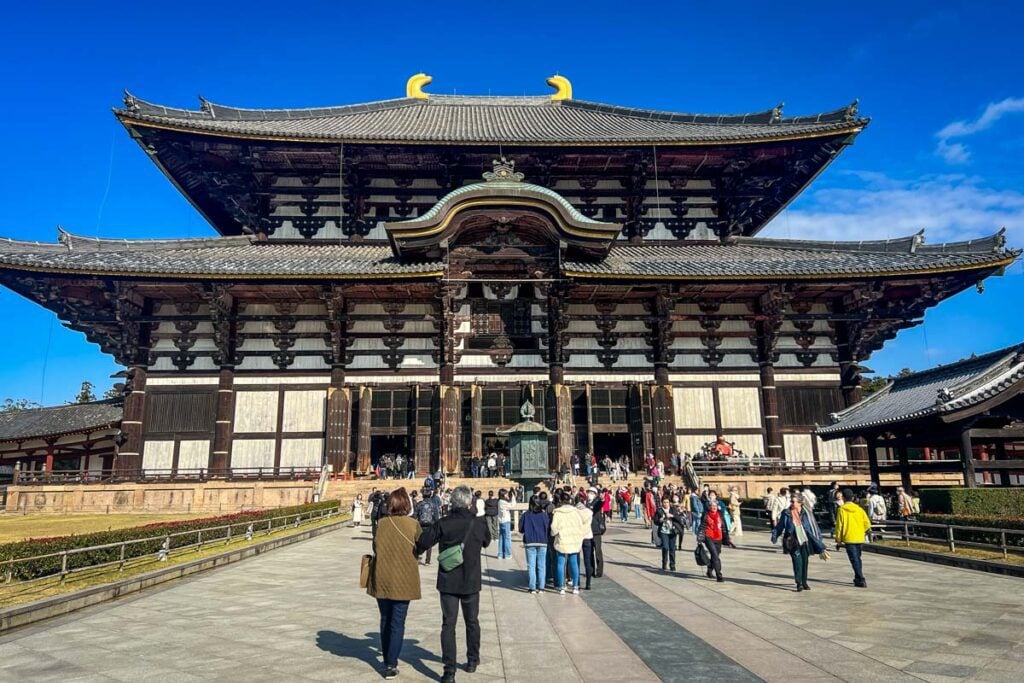
- Fushimi Inari Shrine, Kyoto: thousands of vermilion torii gates leading up a mountain
- Kinkaku-ji “Golden Pavilion”, Kyoto: temple covered in gold leaf and surrounded by gardens
- Shitenoji, Osaka: one of Japan’s oldest temples
- Meiji Shrine, Tokyo: natural wooden torii gates and forested grounds
- Senso-ji, Tokyo: Tokyo’s oldest temple with a giant red lantern
Travel Tip: While you’re visiting a shrine or temple in Japan, you may notice small wooden plaques with writing hanging on a fence or gate of some sort. These are called ema, and all visitors are invited to purchase one and write a prayer or wish on them. It is said that the spirits, or kami, will see your wishes. This is originally a Shinto custom, but over the years it has spread to some temples too.
8. Matcha
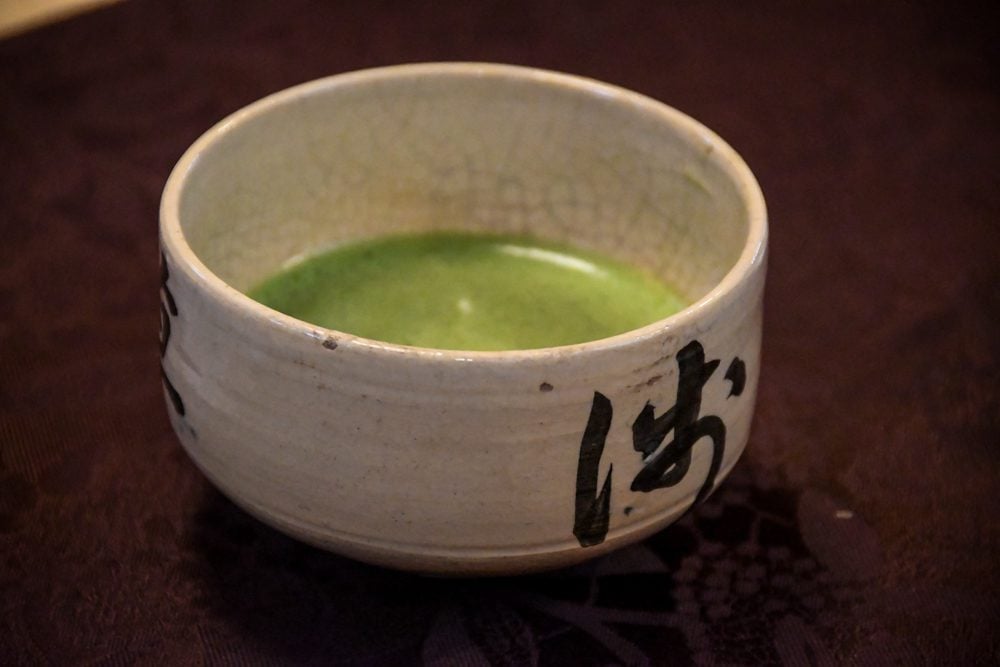
Quick facts:
- Matcha is a fine powder made of green tea leaves.
- The flavor of matcha is earthy and slightly bitter.
- Matcha has 10 times the health benefits of a cup of regular brewed tea.
Matcha is a sensation that has swept the globe, especially with the rise of the health and wellness industry in recent years. Nowadays, you can easily find a cafe just about anywhere that serves matcha tea.
But Japan is next-level. It’s everywhere – matcha ice cream, matcha pastries, even matcha KitKat Bars. Yep, it’s true.
While you can just eat ALL the matcha, you may also want to attend a tea ceremony to observe the spiritual and meditative process behind making a cup of matcha the traditional way.
If you’re visiting a Japanese Garden, see if there is a ceremony taking place in their teahouse. This is an affordable option if you’re on a budget but want a brief tea ceremony experience.
Alternatively, you can book a private tea ceremony with Get Your Guide that includes more explanation of the gestures as well as an opportunity to ask questions.
Travel Tip: Though matcha is the most famous, hojicha and sencha are two Japanese tea varieties that are equally worth trying.
9. Big cities
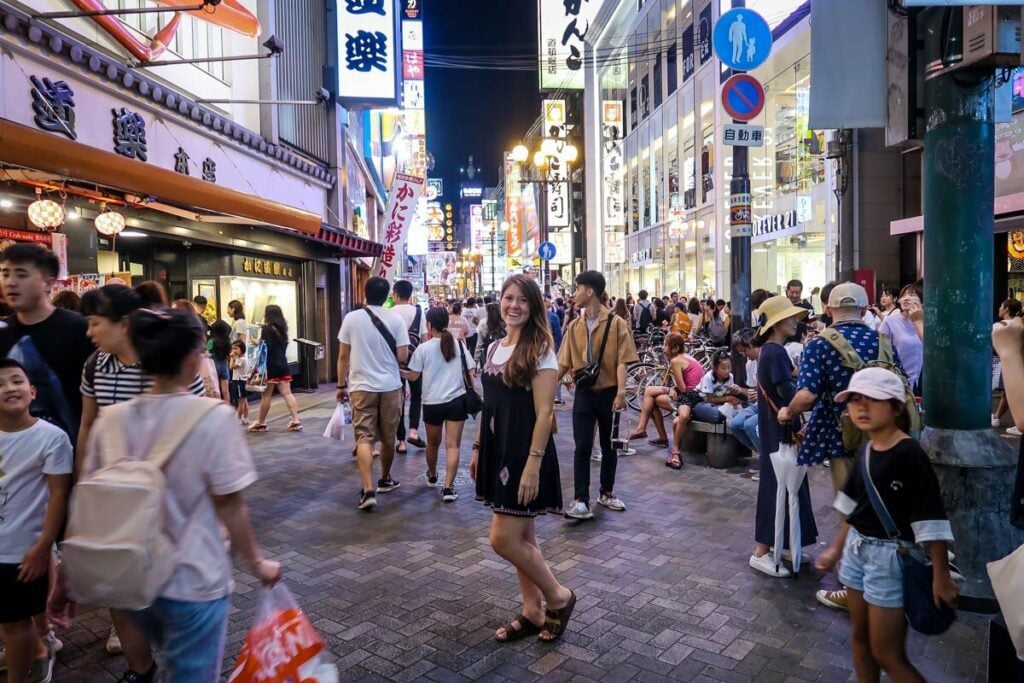
Quick facts
- Tokyo is Japan’s capital and the most populous city in the world.
- Tokyo is home to both the world’s busiest rail station and world’s busiest intersection.
- Yokohama and Osaka are Japan’s 2nd and 3rd largest cities, respectively.
Though we would argue that Japan’s natural landscapes are just as worthy of fame, it’s probably the big, crazy cities that first come to mind for most people: towering skyscrapers, glowing neon lights, sprawling shopping and entertainment complexes, buzzing restaurants, and bustling streets.
Japanese cities are known for their tightly-packed urban centers, their efficient public transportation, and their cutting-edge tech infrastructure. Check out some of our favorite Japanese city guides below.
10. Gardens
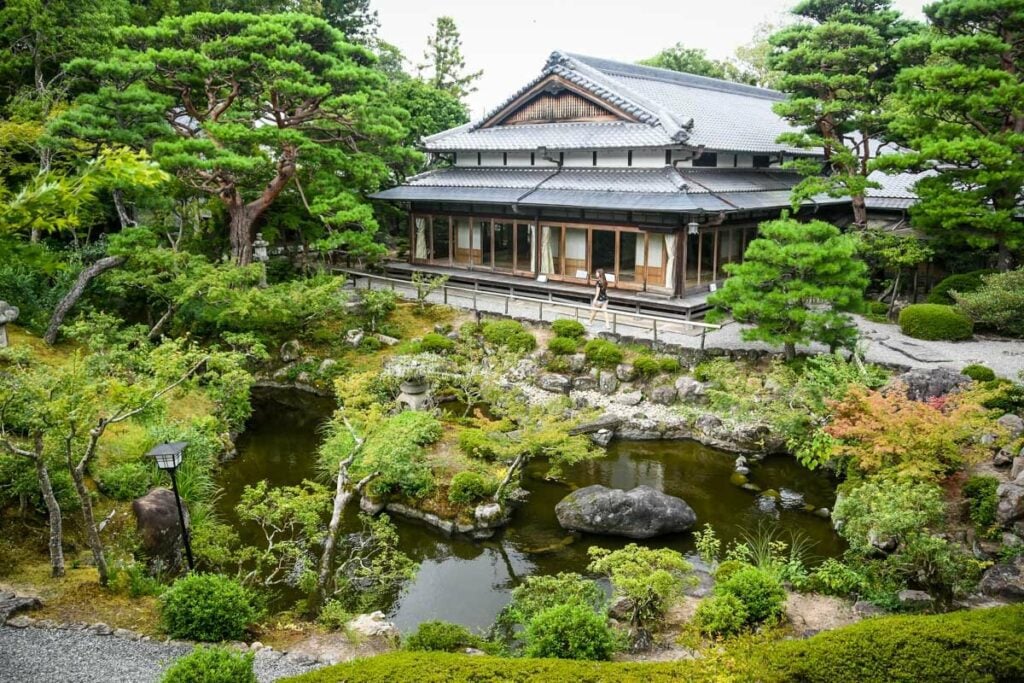
Japanese gardens aren’t your average flowerbeds. They’re meticulously-designed spaces that emphasize nature, peace, and contemplation. Characteristic features of Japanese gardens include hills, ponds, waterfalls, stones, and trees.
The Japanese art of bonsai, now a popular hobby around the world, also reflects the same principles of care and cultivation.
Japanese Gardens (and some types of bonsai trees) change with the seasons and are beautiful year-round, with springtime blossoms, fall foliage, or even a dusting of snow.
While you can find Japanese gardens all around the world, the best place to glimpse these immaculate creations is, of course, in Japan!
Here are some of the most famous Japanese gardens:
- Kenrokuen, Kanazawa
- Korakuen, Okayama
- Kairaku-en, Mito
- Tenryū-ji, Kyoto
- Shinjuku Gyoen, Tokyo
- Imperial Palace, Tokyo
11. Onsen
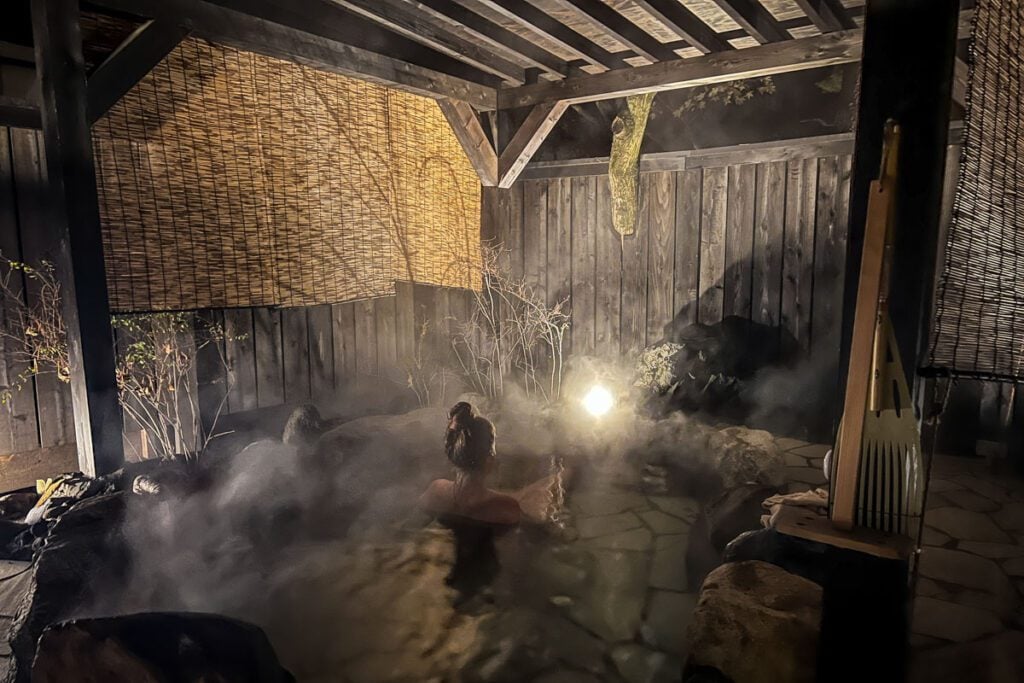
Quick facts
- An onsen is a naturally occurring Japanese hot spring with a bathing facility.
- Sento are artificially heated indoor bathing facilities.
Japan has a lot of volcanic activity, so there are onsens all around the country. Traditionally, onsens are separated by gender, and they are a staple in Japanese culture.
The most magical onsens are the outdoor ones with a view, but you’ll find all varieties. Similarly, sento are indoor bathing facilities that use ordinary heated water (not from geothermal activity).
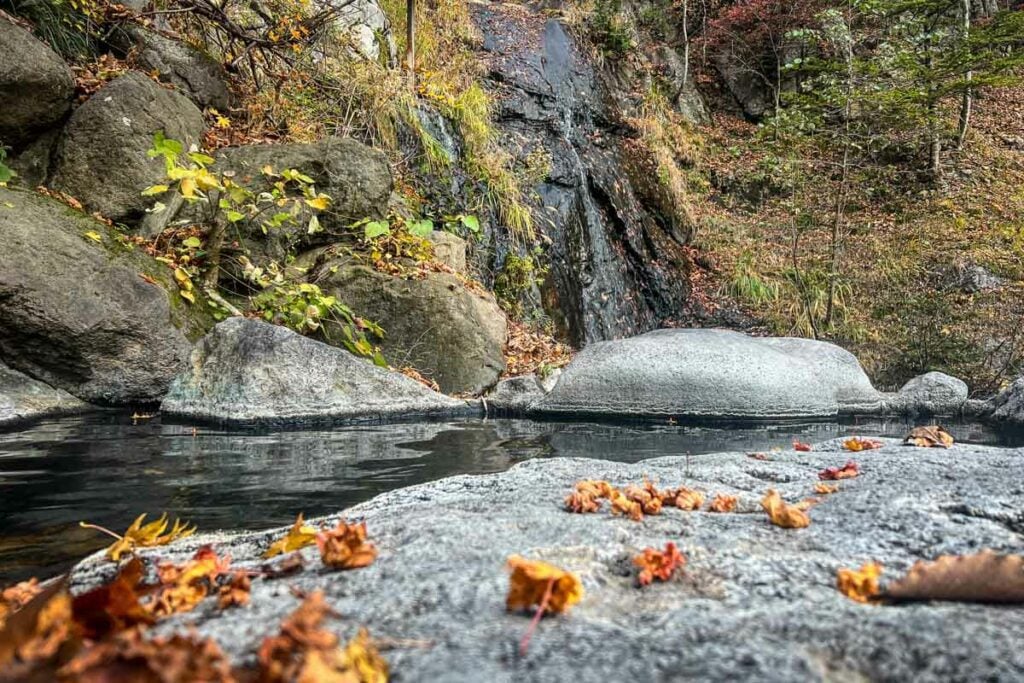
Now, you might say we’re hot spring fanatics. We’ve taken steamy dips all over the world – USA, Iceland, and New Zealand to name just a few – but there’s nothing quite like the Japanese version…
First off, you’ll be naked.
I know what you’re thinking: I have to get naked… with strangers?!
My thoughts were the same. But after experiencing a jjimjilbang (which is essentially the Korean equivalent to an onsen or sento), I realized that nobody cares what you look like. Yes, seriously. It still may feel strange at first, but you get used to it, I promise!
Soaking in an onsen should definitely be on your itinerary, especially if you’re visiting Japan during the winter. While onsens are nice in other seasons as well, there’s nothing quite like immersing in steaming water while chilly winter air kisses your shoulders. Pure magic!
But before you start shedding your clothes, there are some important rules you should know so you don’t embarrass yourself. Read up on onsen etiquette so you’re fully prepared for this experience.
Travel Tip: For those of you who just can’t get over the whole naked-in-public thing (I get it!), you may want to consider staying at a ryokan with a private onsen. This means you can reserve a time slot for yourself (and a travel partner if you wish).
12. Sumo
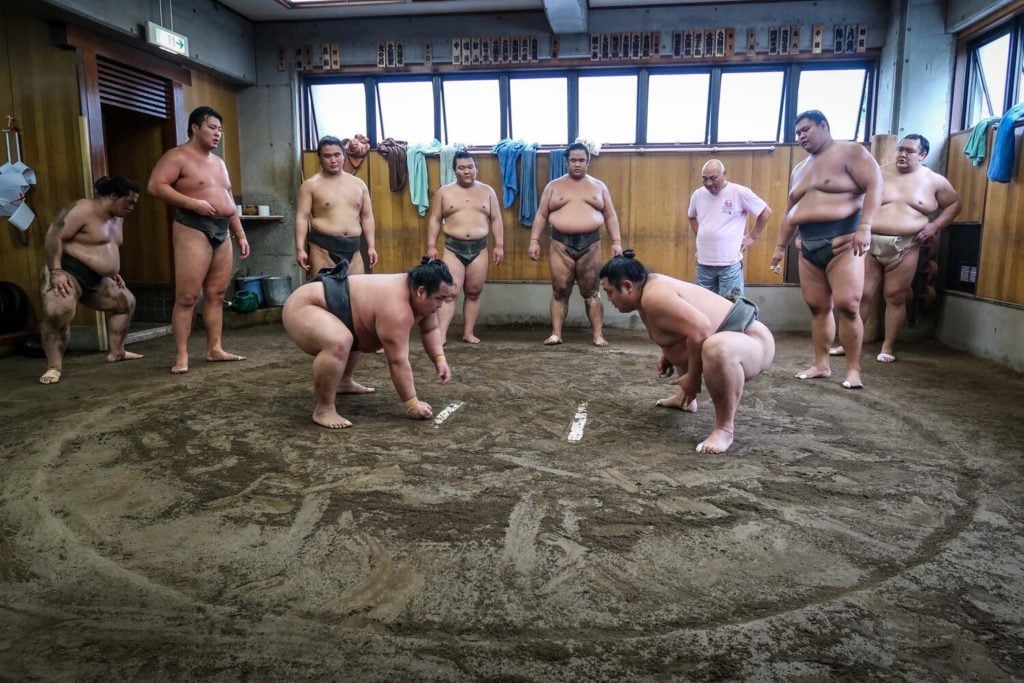
Quick facts
- Sumo wrestling is Japan’s national sport.
- Its origins date back over 1500 years and are connected to the Shinto religion.
- Matches take place in a dohyo, an elevated clay ring topped with a layer of sand.
- Sumo is not an Olympic sport, but is recognized by the Olympic Committee.
There’s no sport more synonymous with Japan than sumo wrestling, an ancient tradition that combines culture, religion, and athleticism.
Sumo wrestlers, known as rikishi, are required to live together in a communal training stable where they practice every day.
During a pre-match ritual, rikishi purify the dohyo with salt and perform a sort of “dance”. First they clap their hands together, then raise their empty hands to show they have no weapons. Next, they squat, then raise their legs and stomp their feet.
Finally, the two rikishi collide, each trying to force the other out of the ring or cause him to touch the dohyo with any part of his body besides the soles of his feet. A match typically only lasts a few seconds.
Professional sumo matches take place 6 times per year, once during each odd-numbered month. But if you can’t make it to a match, it may also be possible to visit a stable and observe a practice.
Travel Tip: We personally visited a stable with Magical Trip. They took care of everything, which made it super easy for us (especially since we don’t speak Japanese!).
We enjoyed our experience, but know this: the practice can get long and repetitive. Your legs may hurt from sitting in the same position, and you may get thirsty. You’re not allowed to move around, eat, or drink until the practice is over, and you never know how long it might be. Just keep these things in mind, especially if you’re traveling in Japan with children.
13. Kimono
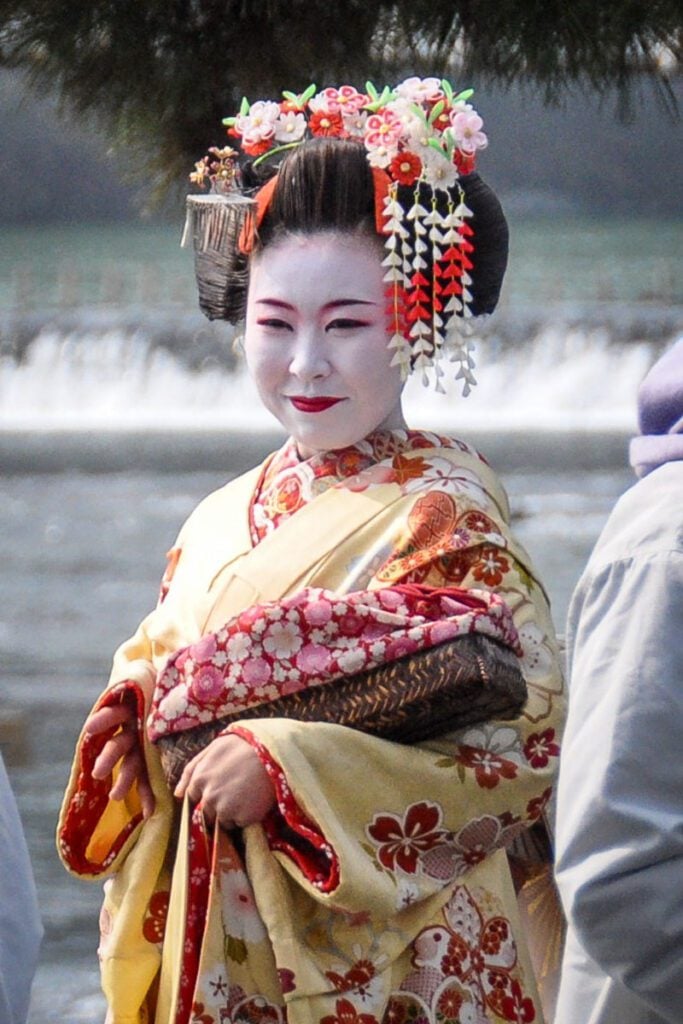
Quick facts
- Originally, “kimono” was simply the Japanese word for clothing.
- Today, Japanese people typically only wear kimono for special occasions and events, such as weddings.
Japan is undoubtedly famous for kimono, the beautiful traditional garments we often see in historical photos and paintings.
But don’t confuse kimono and yukata. Kimono are traditionally silk (though today they’re sometimes polyester), are more formal, have two collars, and are generally heavier with more layers. The kimono we’re most familiar with in the west is the women’s version, which are often dyed or embroidered with colorful patterns.
On the other hand, yukata are typically made from cotton and are more casual, with one collar. Yakata tend to be lighter weight and are worn in the summertime.
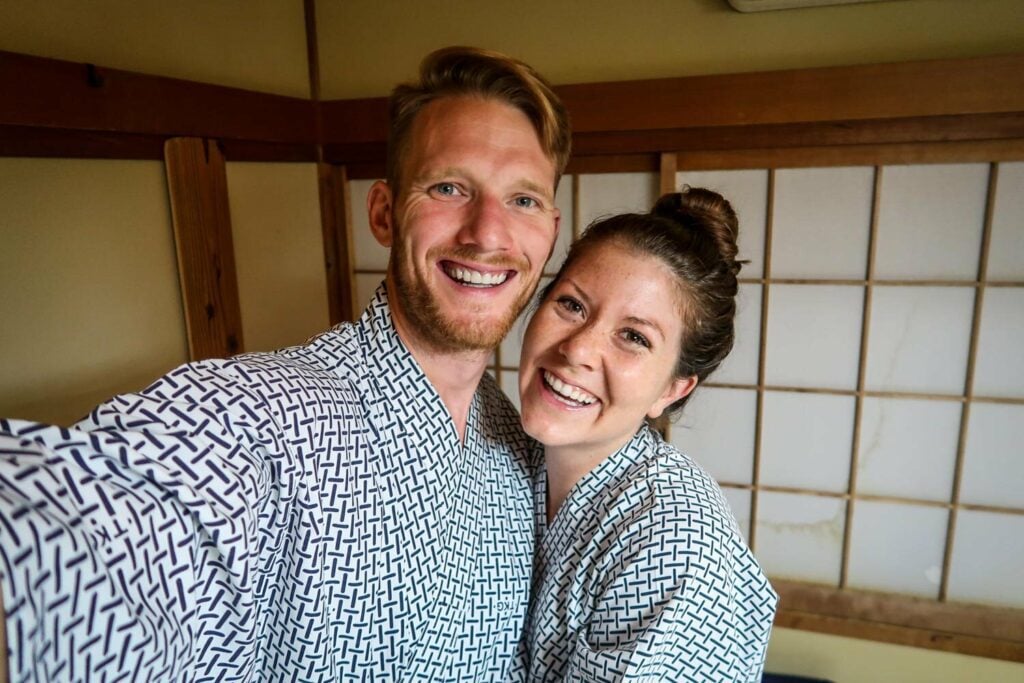
Most ryokans have yukata for guests to wear at nighttime or after soaking in the onsite onsen. So if you’re planning to stay at one of these traditional Japanese inns (more on those in the next section), you’ll likely have an opportunity to try on a yukata free of charge.
You can also try wearing kimono or yukata by renting one to walk around, go sightseeing, or do a photoshoot. There are lots of places around the country (especially in Tokyo and Kyoto) where you can rent them.
Wait… is wearing a kimono as a non-Japanese person considered cultural appropriation?
We’re certainly not experts on the intricacies of this issue, but we’ve heard that many Japanese people enjoy seeing foreigners taking an interest in and showing respect for their traditional clothing. Similarly, when we lived and taught English in South Korea, many of our students and Korean co-workers recommended we wear hanbok, the Korean traditional dress, as a cultural experience.
Obviously this doesn’t speak for everyone, and if you have any insights on the topic we’d love to hear from you!
14. Ryokan
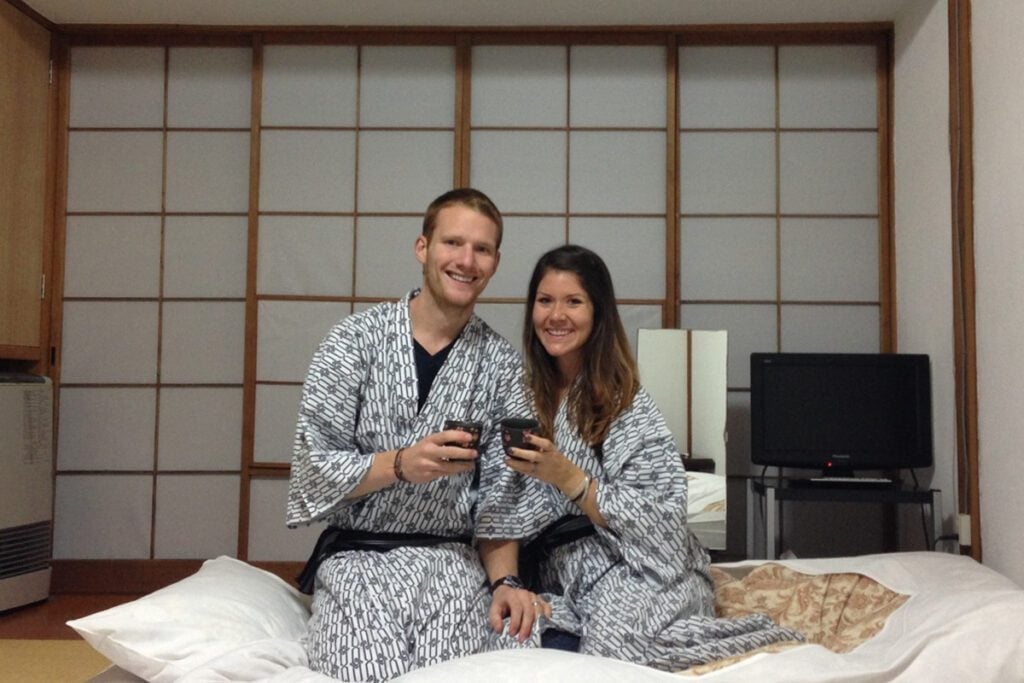
Staying at a ryokan is an experience you can only have in Japan. This type of traditional Japanese inn is characterized by tatami-matted rooms and exceptional hospitality.
You’ll sleep on the tatami floor on a Japanese futon. No, these aren’t the kind of couch-turning-into-bed futon you had in your college apartment.
Japanese futons are essentially a very thick blanket that serves as a mattress, paired with a duvet blanket and a pillow. You can fold up all three items in the closet to save valuable space during the daytime.
Oftentimes, ryokan guests are provided with yukata robes and access to private on-site onsen. Many ryokan also serve elaborate meals, which are usually included in the nightly rate.
Travel Tip: Traditional Japanese pillows are stuffed with beans, and you may encounter these a few times on your travels in Japan. They are much more stiff and lumpy than pillows you may be used to, so if you’re worried about it, you may want to pack a travel pillow.
15. Theme restaurants
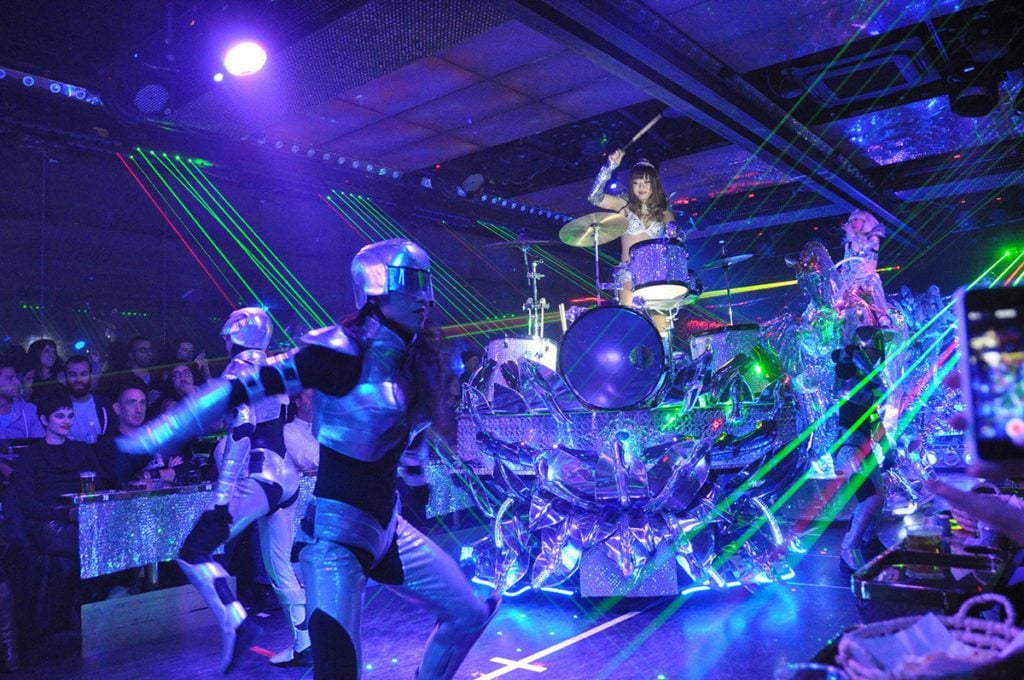
Theme restaurants and cafes are huge in Japan, and there’s such a variety that every type of traveler should be able to find one that appeals to them.
While we’d definitely recommend trying out a theme restaurant, just don’t expect the best meal of your time in Japan. Presentation may be on point, but the food itself at most of these establishments is, well, mediocre. Just keep in mind that you come for the atmosphere and experience, not for the food.
Top theme restaurants and cafes in Tokyo
Check out these spots in Tokyo that range from cute and quirky to “what did I just witness?!”. And while you’re at it, we have a whole list of other cool things to do in Tokyo at night!
- Pokemon Cafe: Pretty much just what it sounds like — Pokemon-themed drinks and food!
- Flower Cafe: If you want an experience that is not so showy or cutesy, the beautiful Aoyama Flower Market Tea House may be just what you’re looking for.
- 2D Cafe: This quirky cafe’s black and white interior looks just like a cartoon sketch. They specialize in bubble teas and Korean-style shaved ice dessert, which pop against the 2D background!
- Ninja restaurant: This is a full-blown experience, and one of the only theme restaurants where the food gets good reviews. Dine in what appears to be an Edo-era village, complete with waterfalls, ponds and the sounds of chirping crickets, and ninja performances at your table.
- Vampire Cafe: If creepy is your thing, you might enjoy this restaurant with wall-to-wall red velvet, servers in French maid costumes, and blood-inspired drinks and treats.
- Kagaya: It seems the only theme to this bar/cafe is insanity. Patrons can expect screaming, costumes, and puppets… If you’re looking for an experience that leaves you wondering, “What the hell just happened?!” this might be it.
- Maid Cafes: This is a popular type of cafe, commonly found in Tokyo’s Akihabara district, which is known for anime. Female servers dress as maids in a sort of cosplay atmosphere.
- The “maid” servers cater to their (mostly) male guests, but also don’t tolerate rude or unwarranted behavior (which can be common). Maid Cafes have a focus on being very cute – think singing songs, taking selfies, and serving latte art.
- There has been a bit of controversy surrounding maid cafes, with some rumors connecting them to prostitution rings. Other sources swear they are totally innocent. Do your own research and decide if this experience is for you.
A note on animal cafes: We’d urge you to practice caution and do a bit of research before choosing to go to an animal cafe. We’ve been to dog, cat, and pig cafes, which seemed okay since these animals tend to like attention from people and are quite domestic.
However, we’ve heard pretty bad things about some of the other animal cafes in Japan, like owl, sheep, hedgehog, fox, etc. Many of these animals are nocturnal or simply aren’t meant to be around people. If you really want to go to an animal cafe, cat, dog or rabbit cafes seem to be the best options.
Related: Read up on our responsible travel tips before your trip to Japan!
16. Vending machines
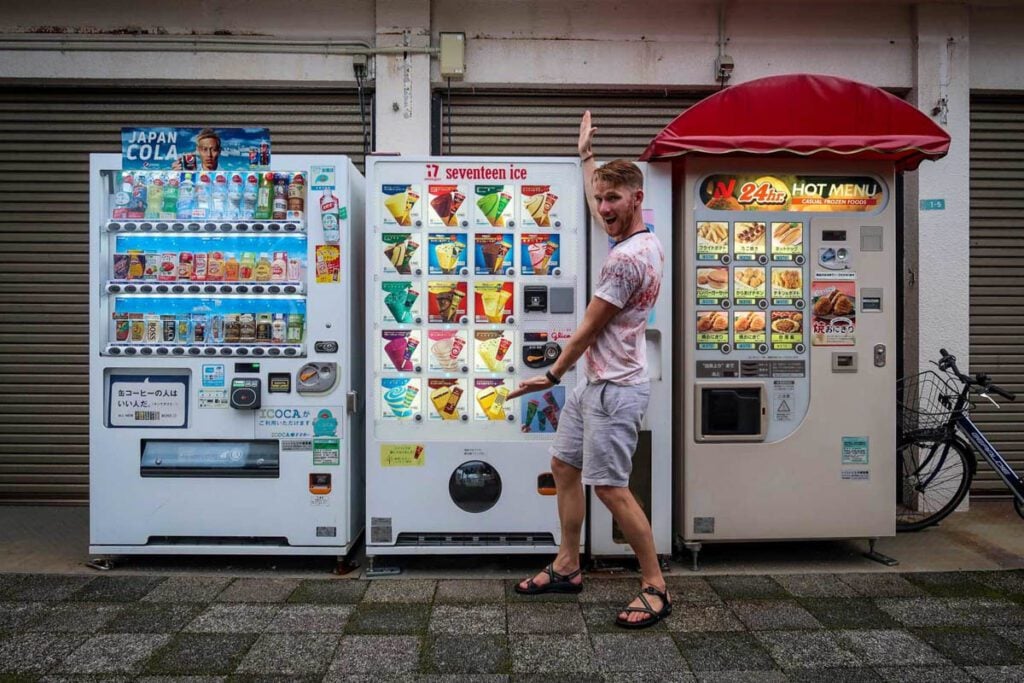
Japan is known for efficiency, so it comes as no surprise that their vending machine game is unlike anything you’ve ever seen.
You’ll see vending machines EVERYWHERE. We even bought an iced coffee from a vending machine on a street corner in very remote towns on our Kumano Kodo trek, where the population couldn’t have been more than a couple hundred people.
Meanwhile, in big cities like Tokyo and Osaka, you’ll find vending machines on just about every block. And they sell EVERYTHING, from the ordinary (sports drinks, coffees, snacks) to the unusual (electronics, alcohol, and even some items that may make you blush).
One Japanese man explained to us that seeing all the vending machines is proof that Japan is very safe. Otherwise, people would vandalize the vending machines.
17. Convenience stores
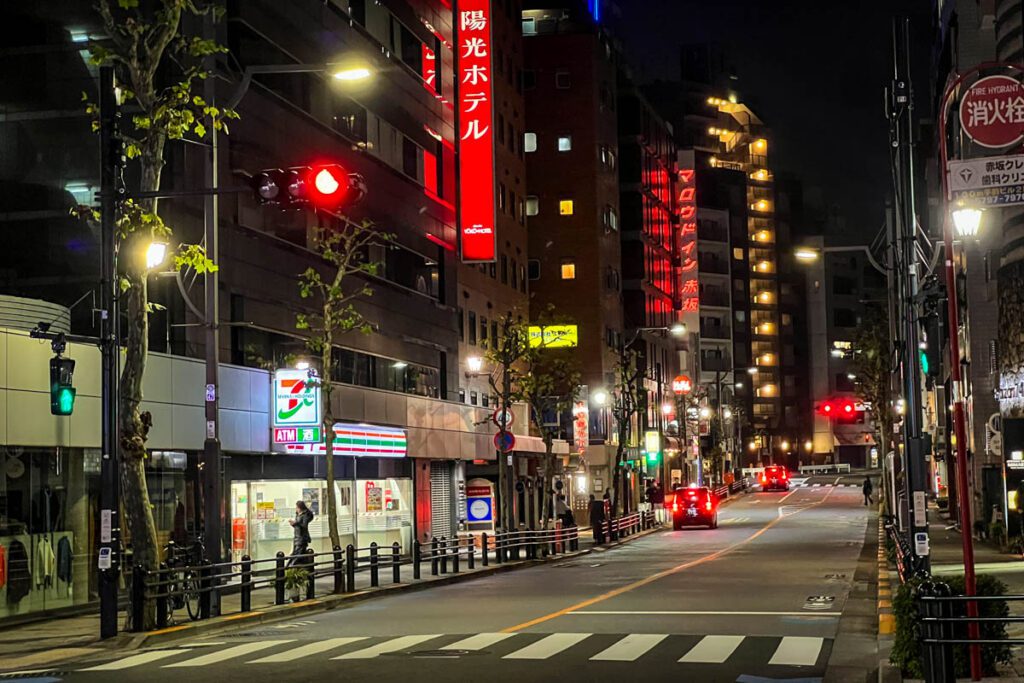
Convenience stores are a big deal in Japan.
And Japanese convenience stores have way more (and less sketchy) food options than in most other places around the world. I mean, I would NEVER get sushi from a convenience store in the U.S., but I definitely did just that in Japan. And it was good!
You can literally eat breakfast, lunch, and dinner (and all your snacks too!) from convenience stores. The most popular chains are 7-Eleven, Lawsons, and Family Mart, and you can find them on just about every city block. No joke.
I will say that at the end of the day, the food you’ll find — while good — is still processed, packaged food. Some people claim they would live off of convenience store food in Japan. I am not one of those people!
I did enjoy it in moderation, and loved being able to try some super quirky treats, like Sugar Butter Sand Tree Cookies, which are weirdly delicious and familiar-tasting!
18. Sake
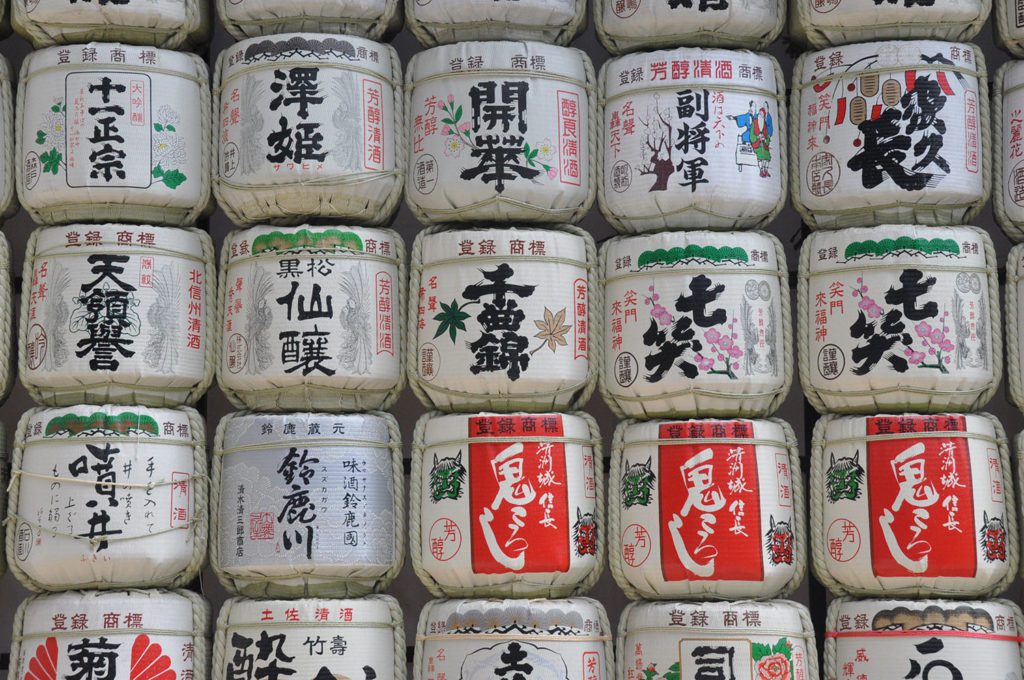
Quick facts:
- Sake is an alcoholic beverage made from fermented rice.
- Though often called “rice wine”, it’s actually more similar to beer than wine.
- Sake can be served warm/hot or cold.
One of the most famous exports from Japan, chances are you’ve had sake at your favorite Japanese restaurant at home while enthusiastically shouting “kanpai!”… oh, just me?!
Similar to wine, sake has different levels of sweetness, dryness, and aromatics. And if you (like us!) are a total sake newbie, it is a good idea to go to an establishment that will help you choose a sake based on your personal preferences.
Travel Tip: Consider touring a sake brewery, which is usually free to do on your own. Sampling sake (and learning a bit about the different types) is also part of some of Arigato’s Food Tours and is a stop on Magical Trip’s Tokyo Bar Hopping Tour.
19. Geisha
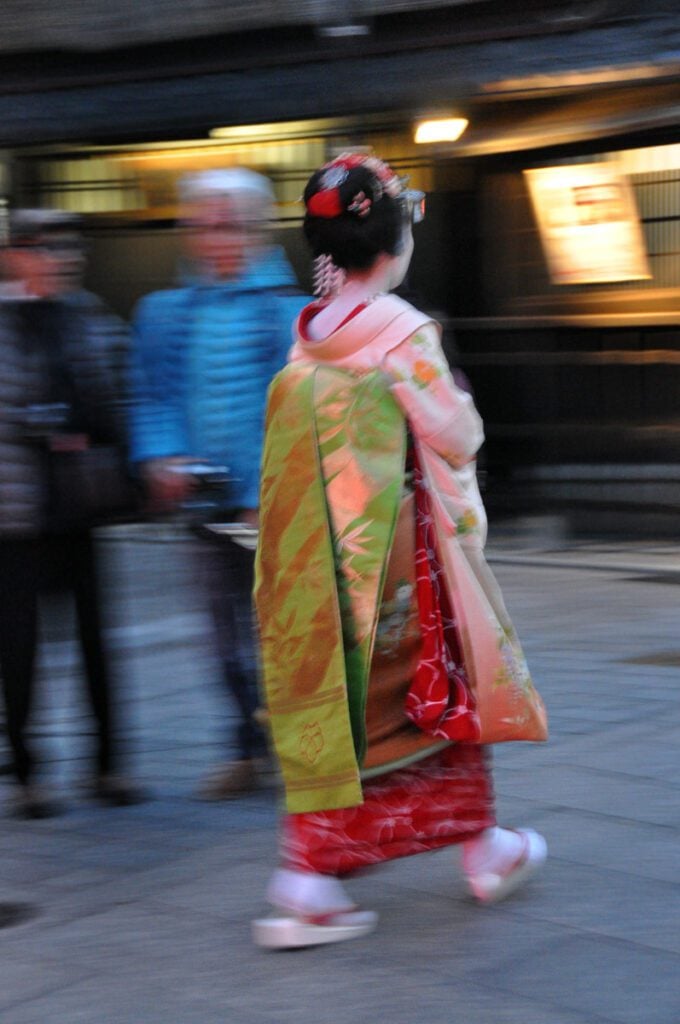
Quick facts
- Geisha are highly skilled performance artists.
- There are still working geisha in Japan today, though only about 2,000 who continue to follow the strict traditional lifestyle (compared to more than 80,000 in the 1920s!).
- Though the name translates to “woman of art”, the first geisha were actually men.
You’ve no doubt seen pictures, movies, or festivals where Japanese women perform in beautiful kimonos and elaborate makeup (remember Memoirs of a Geisha?).
Geisha are trained in dance, music, traditional arts, and the very complicated art of communication. They entertain wealthy guests at dinners in ryotei (traditional restaurants) and ochaya (teahouses).
Travel Tip: Head to Pontocho Alley in Kyoto between 5:30 and 6 p.m. for the best chance of spotting a geisha on her way to perform at one of the area’s many traditional restaurants. Remember that they are working professionals; don’t disturb them and keep a respectful distance.
Good to know: In the Kyoto region, the correct term for this profession is geiko. Geisha is the correct term in Tokyo, and is generally more well-known among foreigners.
20. Izakaya
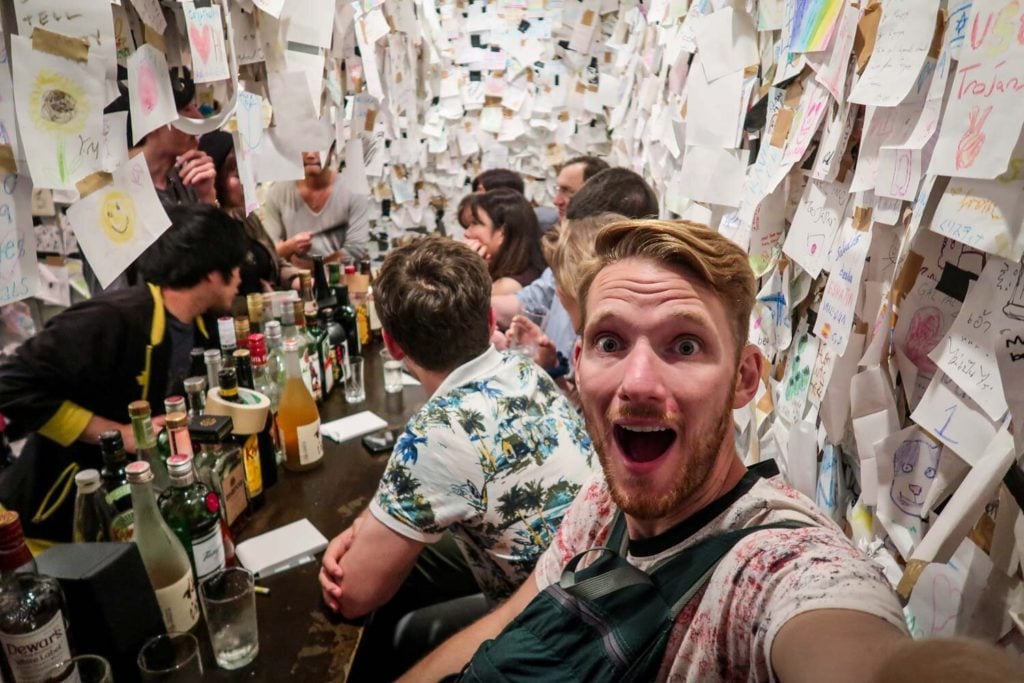
Quick facts
- Izakaya are small, casual bars that serve drinks and snacks.
- This is a great place to rub elbows with locals and get a taste of everyday life in Japan.
Though izakaya (or Japanese restaurants that call themselves izakaya) have found their way to other parts of the world, they can’t capture the atmosphere of these tiny Japanese bars.
Sometimes izakaya have just a handful of seats, and other times they have a second floor with more seating. But their defining features are that they are cozy, they serve drinks and small dishes, and they are good places to soak up the local ambiance.
We’ve had some really cool izakaya experiences where we mingled with locals, tried dishes we wouldn’t have otherwise, and had an overall great evening.
You can find izakayas all around the country, but here are some famous areas to hop from one izakaya to another:
- Tokyo: Golden Gai, Yakitori Ton Ton, or Omoide Yokocho aka Piss Alley
- Osaka: Shinsekai or streets just outside of Dotonbori
- Kanazawa
Travel Tip: If you are hesitant about going to an izakaya on your own, Magical Trip offers tours where you can share the experience with a local and other travelers. Oh, and it is quite helpful to be with someone who speaks a bit of Japanese when ordering because many izakayas don’t have English menus.
Good to know: Some izakayas charge a “cover fee”, which varies based on the place (we paid on average around 300 yen per person). They might bring a small (I mean tiny!) little dish that is supposedly what you’re paying for (as well as your seat).
21. Shibuya Crossing
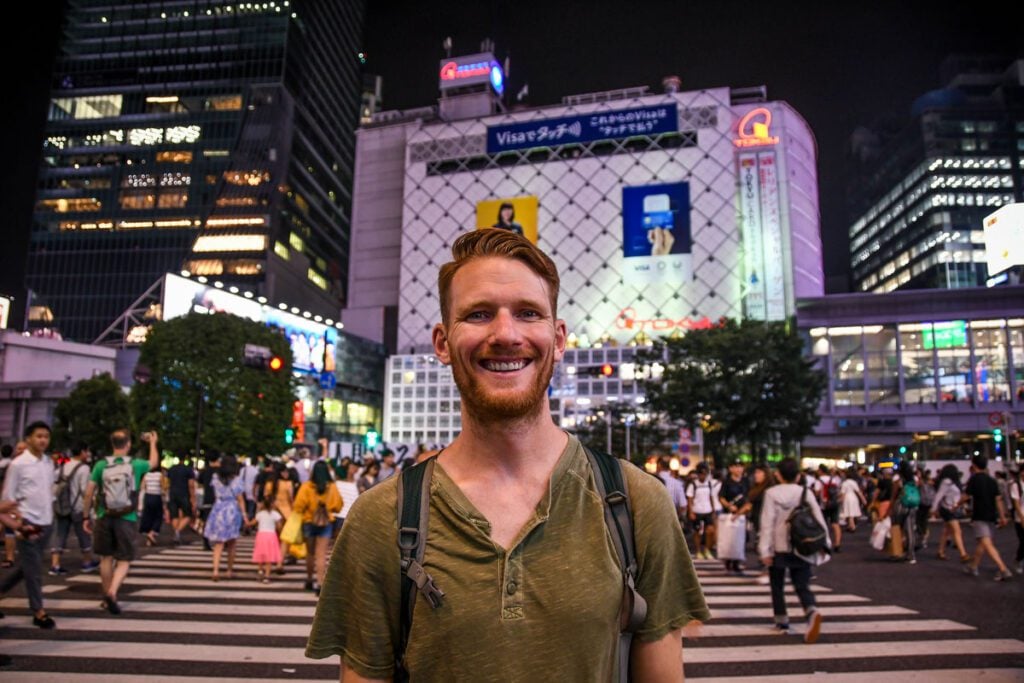
Quick facts
- Shibuya Crossing is the busiest intersection in the world.
- It’s also known as the “Shibuya Scramble”.
Shibuya Crossing is everything I imagined Tokyo to be: neon lights aglow and people walking every which-way in organized chaos.
This spot where five intersections converge is known famously as “the scramble” and should be a must on your Tokyo to-do list. It’s a quick, easy, and FREE experience that you’ll never forget.
View the crossing from above at Shibuya Sky
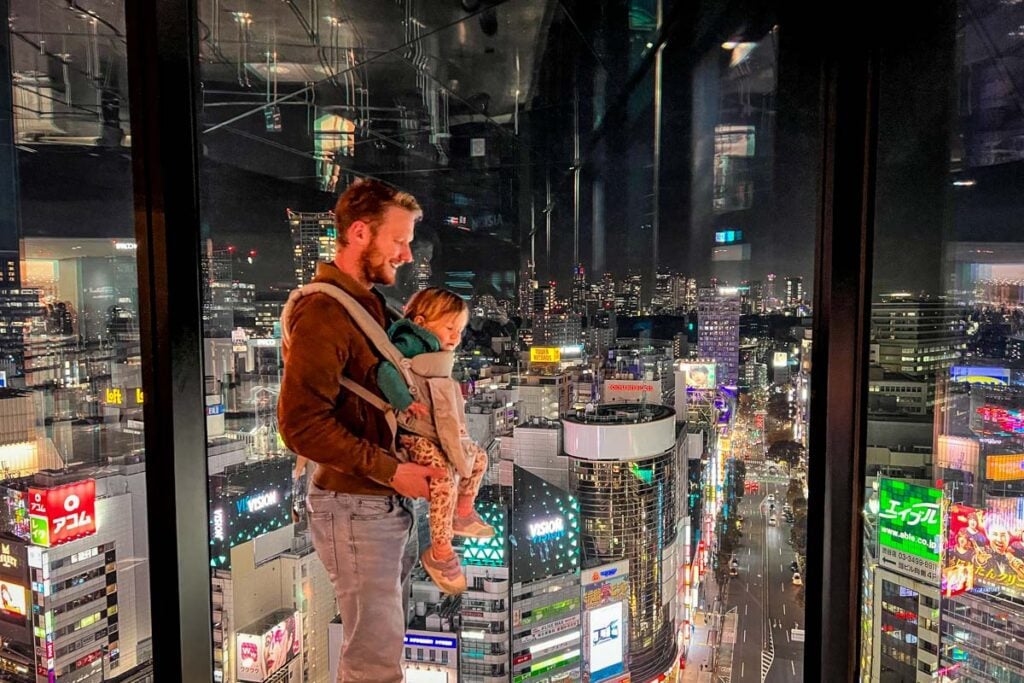
An alternative to having eyes on the ground is viewing the chaos from above. The Shibuya Sky rooftop observatory is the newest addition to central Tokyo’s lineup of rooftop views.
At approximately 230 meters (~755 ft) above the intersection, it’s the tallest skyscraper in Shibuya. The open-air observatory offers 360º views of the city and on a clear day, you can even catch a glimpse of Mount Fuji in the distance.
- Entrance fee: ¥2,000 for adults (~$15 USD); ¥1,800 if you book online in advance (we’d highly recommend booking in advance because it sells out almost every day)
- Hours: 10 a.m. to 10:30 p.m.
22. Autumn Leaves
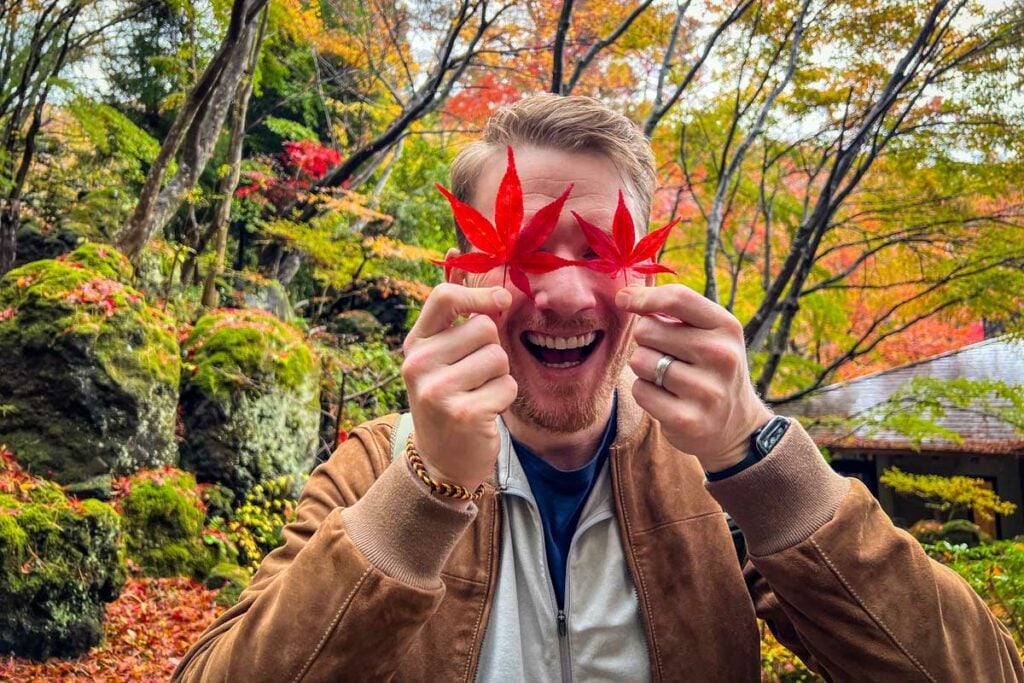
Quick facts
- Japanese maple leaves are called momiji.
- Momijigari translates to “red leaf hunting” (basically the fall equivalent of hanami, or “flower viewing” in the spring).
- The term kōyō refers to the process of leaves changing colors during the fall.
While sakura season unquestionably takes center stage, Japan is also famous for its breathtaking fall foliage.
In autumn, the country transforms into a kaleidoscope of colors as maple and ginkgo trees display vibrant shades of red, orange, and yellow.
Parks, gardens, and temples become picturesque settings, making it the perfect time for leisurely strolls, outdoor photography, and momijigari, the Japanese version of what we call “leaf peeping” in the US.
23. Manners
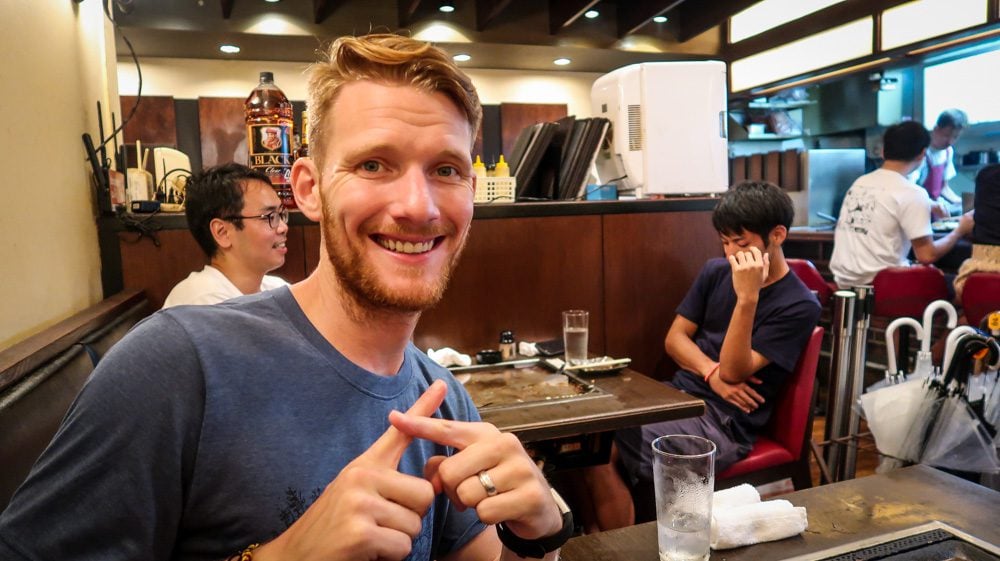
Etiquette is very important in Japan. It’s a good idea to read up on some Japanese manners before your trip so you don’t embarrass yourself or offend someone.
Here are couple manners to keep in mind when traveling to Japan:
- Eating while you walk is considered sloppy. Instead, find a place to sit and enjoy your snack.
- Pointing is considered rude. Instead, use an open hand to make gestures.
- Blowing your nose in public can be considered rude. Japanese people often go into the bathroom to blow a stuffy nose.
- On a crowded subway or train, it is polite to take off your backpack and hold it in your hands.
- Slurping noodles not only cools them down as you eat, but it indicates that the meal is delicious. So slurp away, it’s the polite thing to do!
- Taking off your shoes is common courtesy before entering many places. If the floor is raised at the doorway, it is an indicator that you should remove your shoes.
We’ve put together a Japanese etiquette guide that covers everything from eating to trains to onsen:
24. Safety
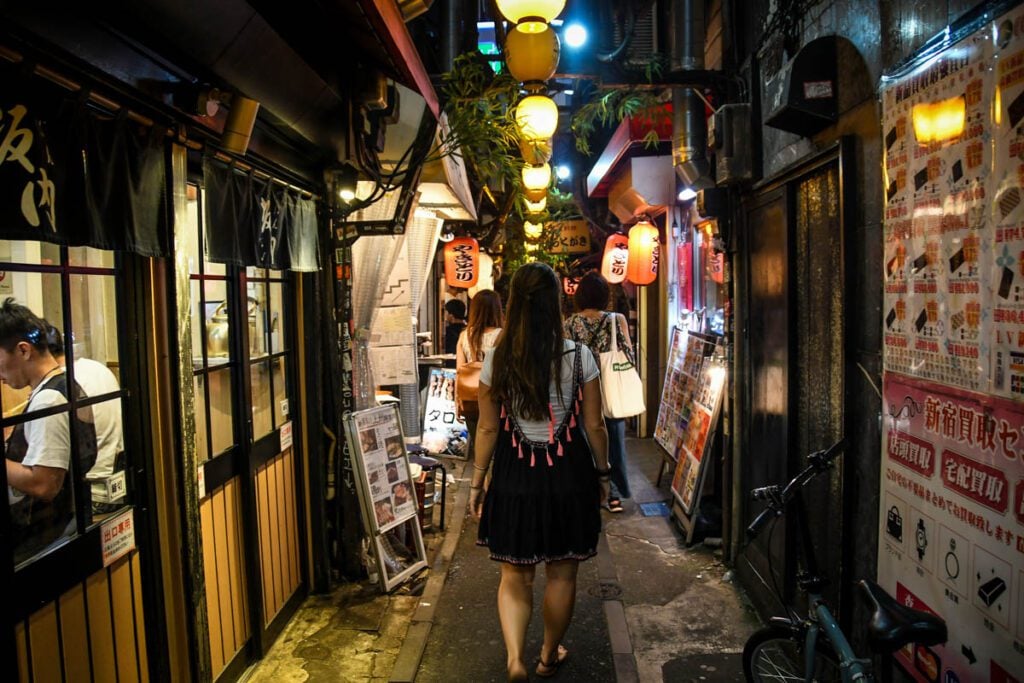
Good news for solo travelers: Japan is famously safe. Like, very safe.
Of course, you’ll still want to use common sense on your travels in Japan, but the chances of encountering dangerous situations or theft are very slim.
We’ve known people who have left their wallet on a crowded subway in Tokyo, only to have it hand-returned to them hours later. The thing we had to get used to was being mindful of our belongings when we returned to the US after our trip to Japan!
Psst! Here are some essential travel safety tips you should know before any travels!
25. Capsule hotels
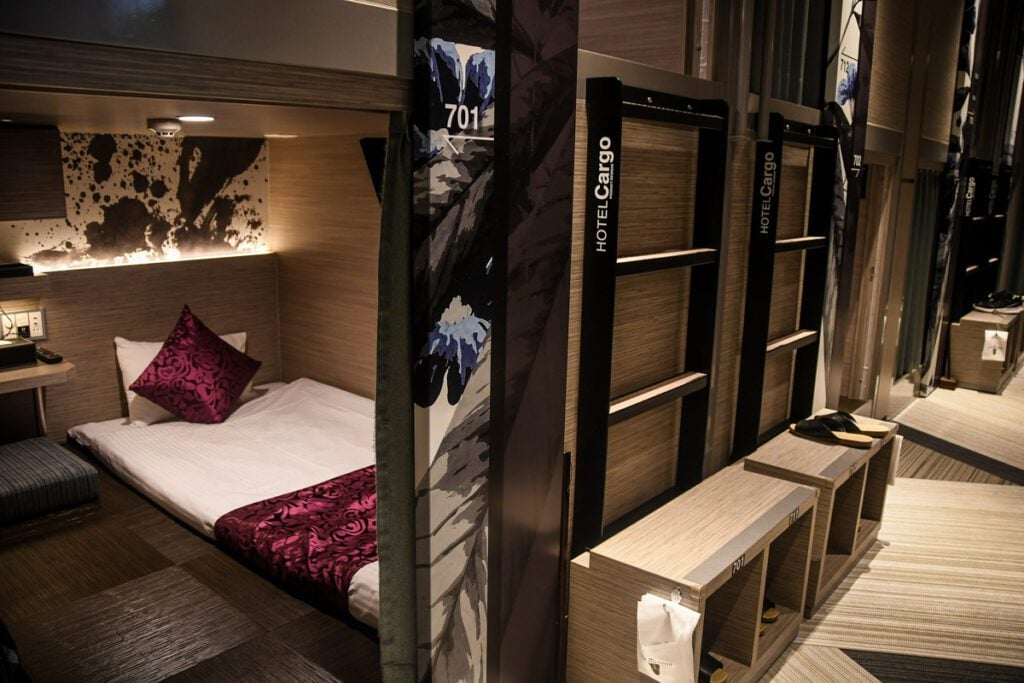
Quick facts
- Capsule hotels appeared in the late 1970s as an affordable way for people — oftentimes businessmen traveling for work — to spend the night in the ultra-crowded city centers of Japan.
- The world’s first capsule hotel was in Osaka.
Spending the night in an enclosed space may sound a little… coffin-y. But, I am here to tell you that it is far less sketchy (and less claustrophobic!) than it sounds.
With millions of people and limited space, it makes sense why capsule hotels are such a popular type of accommodation in Japan.
At their most basic, capsules are roughly just enough space for a bed. You can crawl and sit, but not stand. But now that staying in a capsule, or “pod hotel”, has become a popular tourist experience, there are tons of options that vary in size and luxury level.
Capsule hotels also typically provide pajamas and toiletries, and are most often separated by gender. There are shared bathroom facilities as well as a common space, though they tend to be much less social than hostels.
We had to experience it for ourselves, so we booked 2 pods at Hotel Cargo in Osaka… even though it meant that we would need to spend the night apart. (I know, I know, we’re gross and mushy-gushy!)
Travel Tip: We learned there are some capsule hotels that have “couple capsules”, so you might want to search those out if you don’t wanna spend the night apart from your hunny. No judgment here!
We opted to pay a bit more for one of the higher-rated capsules, and we were impressed with how comfortable it was. You can’t stand in the pods, but otherwise it seems like everything you have in a normal hotel room: vanity, tv, trash can, even a mini closet.
26. Arcades (pachinko)
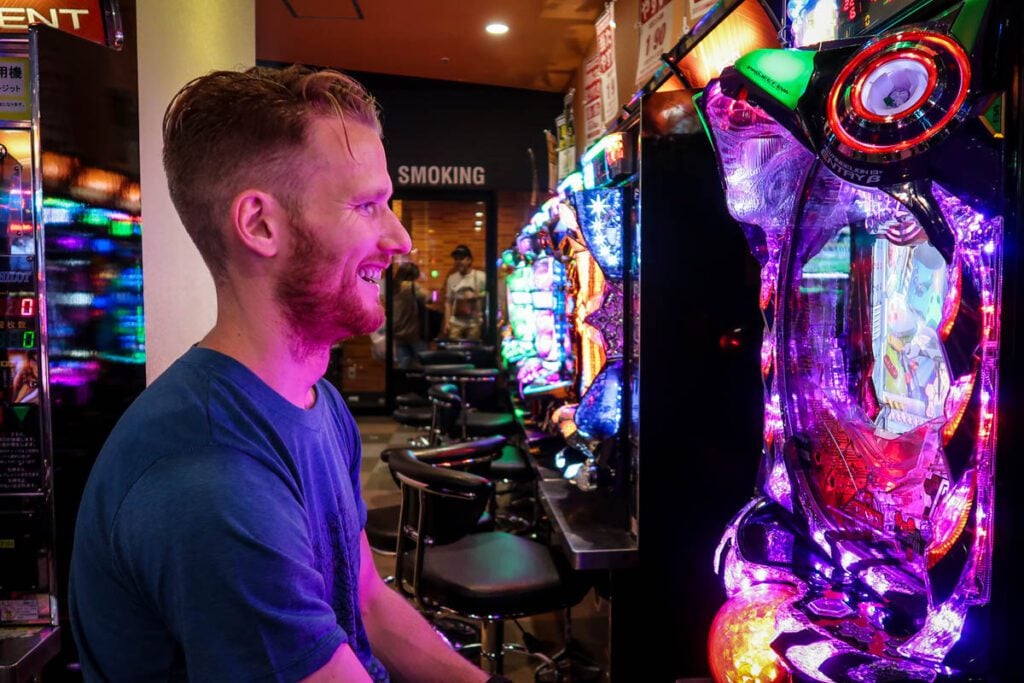
Imagine a snazzy Vegas slot machine got friendly with a pinball machine… their baby (weird analogy, I know) would be pachinko!
Sparkly, loud, flashy, and a bit confusing, you’ll find these popular Japanese gaming machines all around the country. From small venues in rural towns to the ostentatious establishments in major cities, there’s no denying pachinko is a big deal in Japan. While its popularity is on the decline, pachinko is still a billion dollar industry.
Most gambling is illegal in Japan, so instead of winning money, you get… wait for it… METAL BALLS! You can use these to continue playing or exchange for prizes, like snacks, toys, or (if you’re a really big winner) electronics. Much like tickets at an arcade in the States.
27. Bamboo groves
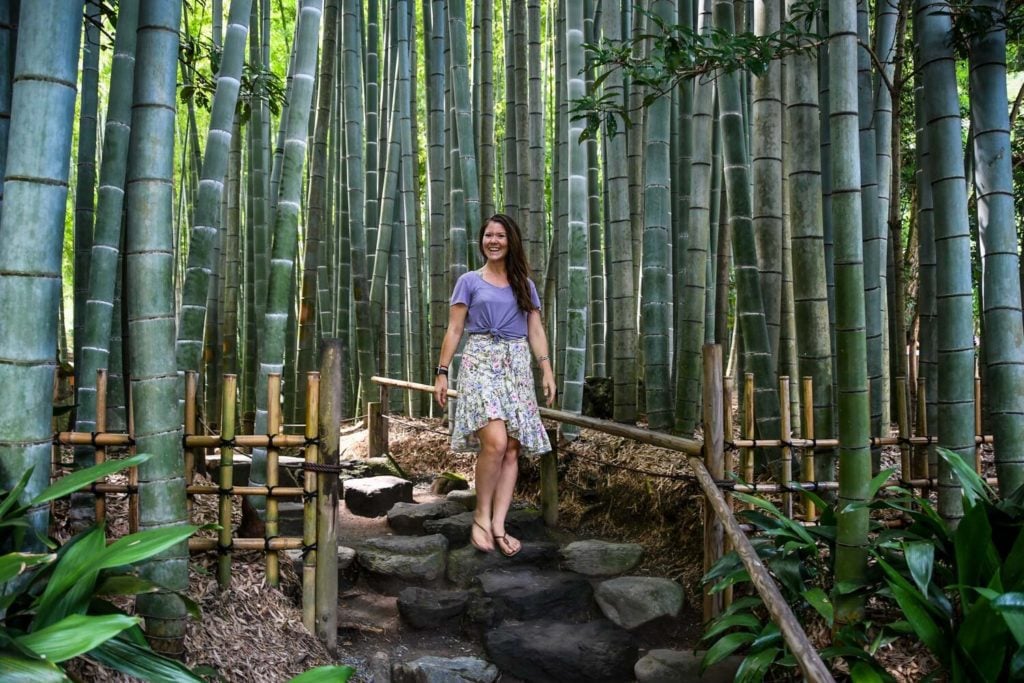
Strolling through a bamboo grove is an otherworldly experience. Slender stalks tower overhead, swaying and rustling in the breeze as soft light filters through the canopy. You just can’t help but feel at peace.
While the Arashiyama Bamboo Forest is undoubtedly the most famous in Japan, it is far from the only bamboo grove in the country. In our opinion, it is too crowded to thoroughly enjoy, so we’d recommend visiting one of the following bamboo groves instead:
- Adashino Nenbutsuji: Not far from its famous neighbor in Arashiyama, this bamboo grove is small but 100 times more peaceful.
- Kamakura: just a 10-minute bus ride from the train station is the Hokokuji Bamboo Forest. It’s small but beautiful. And while you’re in town, might as well swing by the Great Buddha of Kamakura that dates back to the year 1252.
- Four Seasons Bamboo Forest Wakayama Farm: This stunning bamboo forest is just a short train ride outside of Tokyo and makes a great day trip. On the weekends, they do evening illuminations which looks spectacular.
- Nakasendo Trail: there is a portion of this trail where there is a wild bamboo grove. No paths, no crowds, just bamboo!
28. Powder skiing
Did you know that Japan boasts some of the best skiing and snowboarding in the world?!
With more than 500 resorts sprinkled throughout a country that is smaller than California, you really don’t have to go far to find good – no, GREAT – slopes.
Some of the better mountains are in the northern regions like Hokkaido and Tohoku, but we’ve heard it’s pretty killer, man all over Japan.
29. High-tech toilets
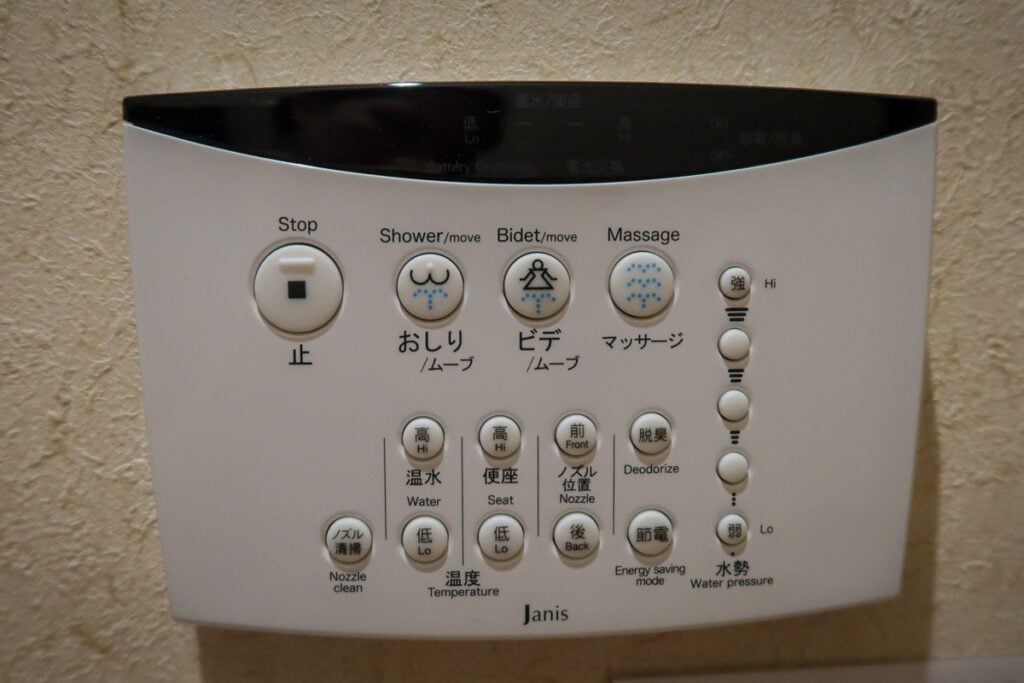
You’ve probably heard about Japanese toilets, and what the rumors say is true: going to the bathroom in Japan is an experience in itself.
There are all sorts of buttons that perform different functions. For example, one button may play waterfall sounds or music to cover up, ummm, some other sounds you may not want the person in the next stall to hear. Other buttons will trigger a bidet with adjustable pressure strengths.
All those buttons can be a little intimidating at first, but try them out (locate the STOP button first!) and take advantage of those fancy toilets while you can. Because you surely don’t have those fun features at home!
30. Purikura
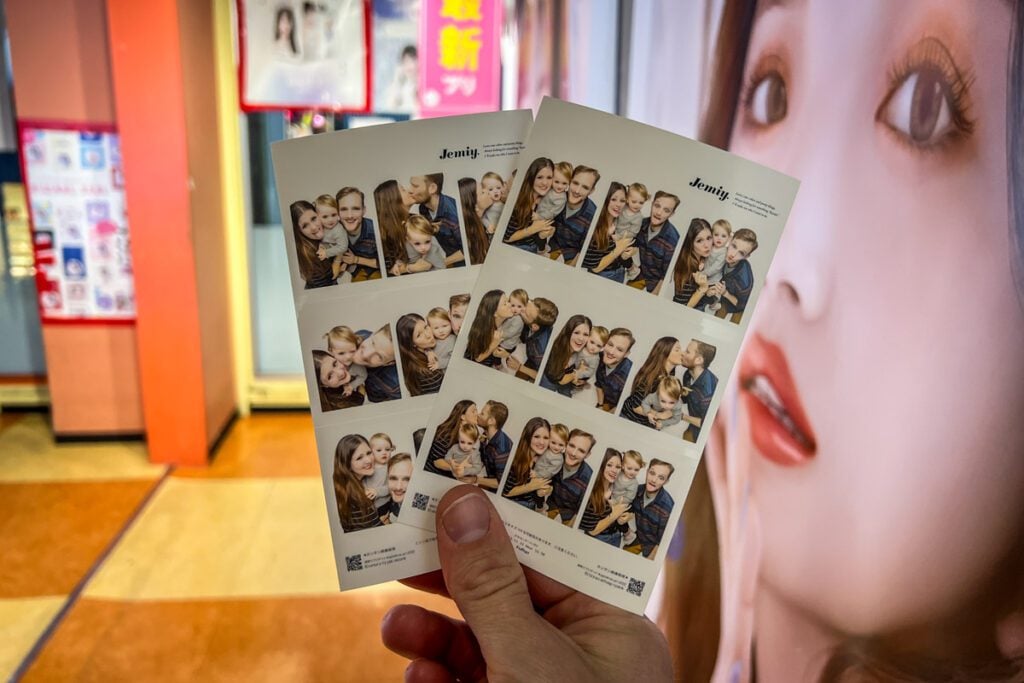
Purikura, or Japanese photo booths, don’t just print off a strip of 4 photos and call it a day. No, they go above and beyond.
After striking a handful of poses, you will exit the photo booth. And this is where the fun begins…
You’ll get to choose your favorite photos and edit them all with filters. You can enlarge your eyes, shrink your nose, or do whatever strikes your fancy. Add makeup (Ben got really into this part!) and stickers until you’ve had enough, or until the timer goes off.
Yep, that’s right… this whole thing is timed, so part of this experience is rushing to get it all done before the time runs out!
At the end, you leave with a fun and cheap Japanese souvenir. Prices may vary, but the one we did cost 400 yen.
Travel Tip: Photos print out quite small and you only get one copy, so if you’re with a partner you may want to go back in again so you each get a keepsake.
31. Atomic bomb
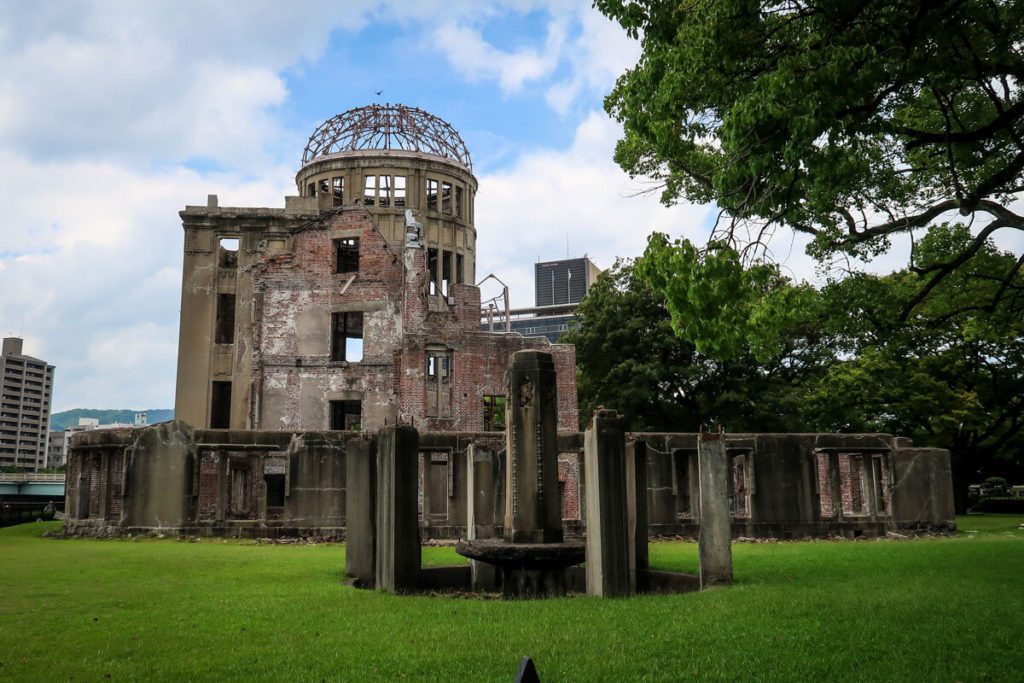
Quick facts
- On August 6 and 9, 1945, the US dropped atomic bombs over the cities of Hiroshima and Nagasaki, respectively.
- These remain the only atomic attacks in history.
- The exact death toll of the attacks is still not known, and probably never will be.
Not all of Japan’s claims to fame are positive; in fact, this one is gutting.
To this day, Japan remains the only country to have been attacked with atomic weapons. Thank god it hasn’t happened again, and we hope it never will.
The casualties from these attacks have been notoriously difficult for historians to quantify. Here are one source’s estimates:
- Hiroshima: 70,000 immediate deaths, 140,000 by year’s end — more than half the city’s population
- Nagasaki: 40,000 immediate deaths, 70,000 by year’s end — roughly a third of the city’s population
But then you also need to take into account the long-term effects of radiation poisoning, increased rates of cancer, and generational trauma… the death toll climbs and climbs.
We took a day trip from Osaka to Hiroshima to visit the Peace Park and tour the Peace Memorial Museum. This can take about half a day and is totally doable on your own since there are lots of English signs.
As you can imagine, this is heavy stuff. But it’s incredibly important for people to see places like this in order to better understand our world history, to pay respects to lives lost, and to move forward without repeating the mistakes of our past.
Travel Tip: If you have extra time, we highly recommend exploring more of the city. Hiroshima has a palpable energy and a spirit of resilience that is deeply moving, and there are lots of fun things to do. Plus, it’s one of the best places to try okonomiyaki!
32. Origami
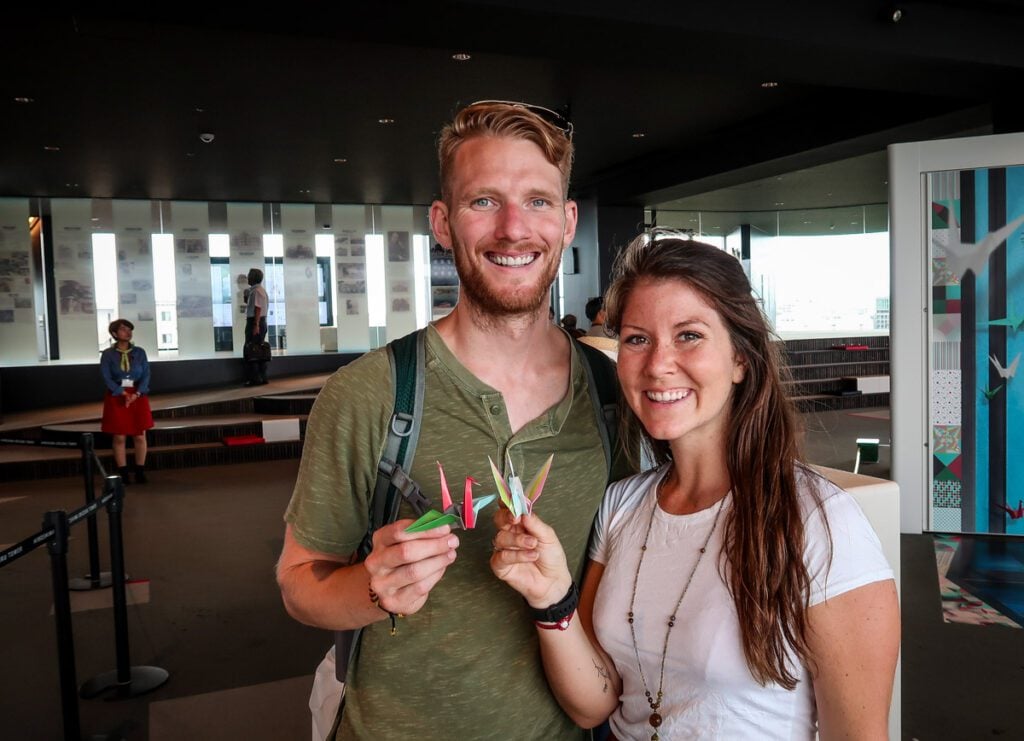
Origami is known around the world as the Japanese art of paper folding, but you may be surprised that the practice was likely introduced to Japan from China. Makes sense, since China is where paper was invented!
Origami is not only for artistic expression, but also a meditative practice. Oftentimes, families pass down origami skills to their children, and children also learn paper-folding in kindergarten.
33. Technology

With globally-recognized names like Sony, Nintendo, Panasonic, Canon, and Toshiba (to name just a few!), there’s no denying that Japan is a world leader in technology.
From robotics to AI, Japanese tech has helped shape our world, and continues to find innovative solutions for daily life:
- DAWN Avatar Robot Cafe: At this experimental business we visited in Tokyo, people with ALS or other disabilities that prevent them from working in-person remotely operate robots, providing accessible employment opportunities.
- Robot-assisted healthcare: Robotics assist the elderly in daily tasks, providing companionship and support for an aging population.
- Augmented reality in ecommerce: Retail brands use AR technology for virtual try-ons, revolutionizing the online shopping experience.
- Automated parking systems: Compact urban living is more convenient with automated parking systems, where robotic platforms park cars more efficiently.
- Holographic entertainment: Entertainment venues feature holographic concerts and performances for immersive and futuristic experiences.
- Drone deliveries: Japan is currently testing drone deliveries for goods and services, providing a fast and efficient alternative to traditional delivery methods.
34. Karaoke
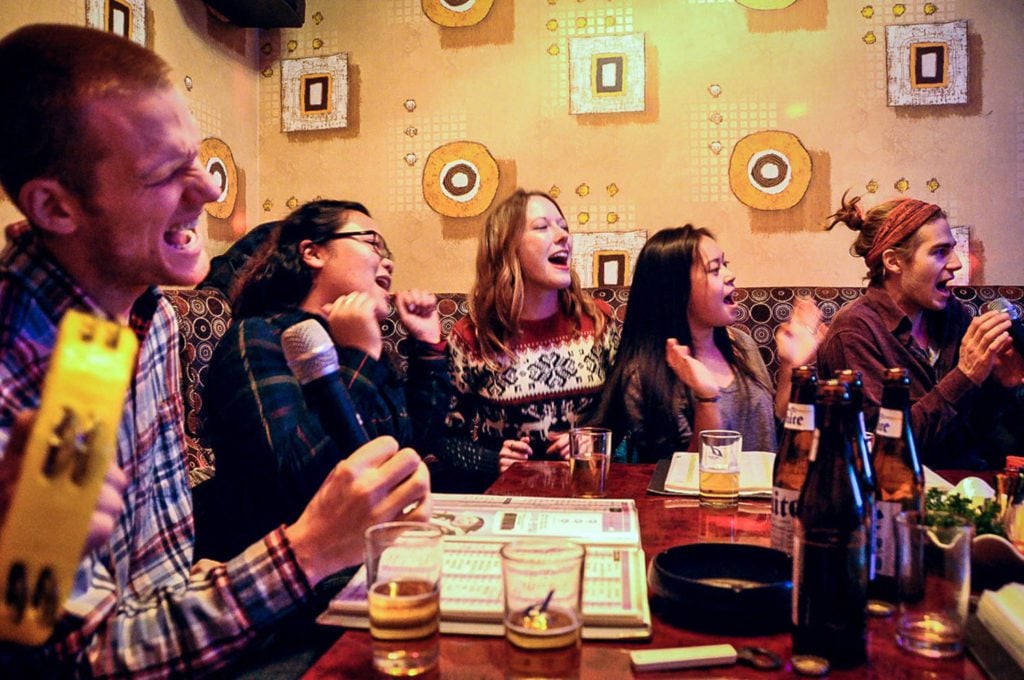
Quick facts
- The word “karaoke” comes from the Japanese words kara, meaning “empty”, and oke, short for “orchestra”.
- Daisuke Inoue invented the first singing machine in 1971, before the term “karaoke” existed.
Karaoke is a big deal in many parts of Asia. If you fancy yourself a singer, you’ll definitely want to experience Japan’s karaoke culture, because it’s a bit different from the US…
In Japan, Karaoke bars have private rooms you can rent to belt out your favorite tunes. Most rent by the hour and you can order drinks and snacks right to your room.
A karaoke room typically has a couch and a television screen from which you can select all your favorite songs (“Wannabe” by Spice Girls is Ben’s go-to karaoke song!). Some rooms even have light shows, props, and tambourines for your backup dancers.
And the best part? Nobody will complain if you’re off-tune!
35. Cosplay
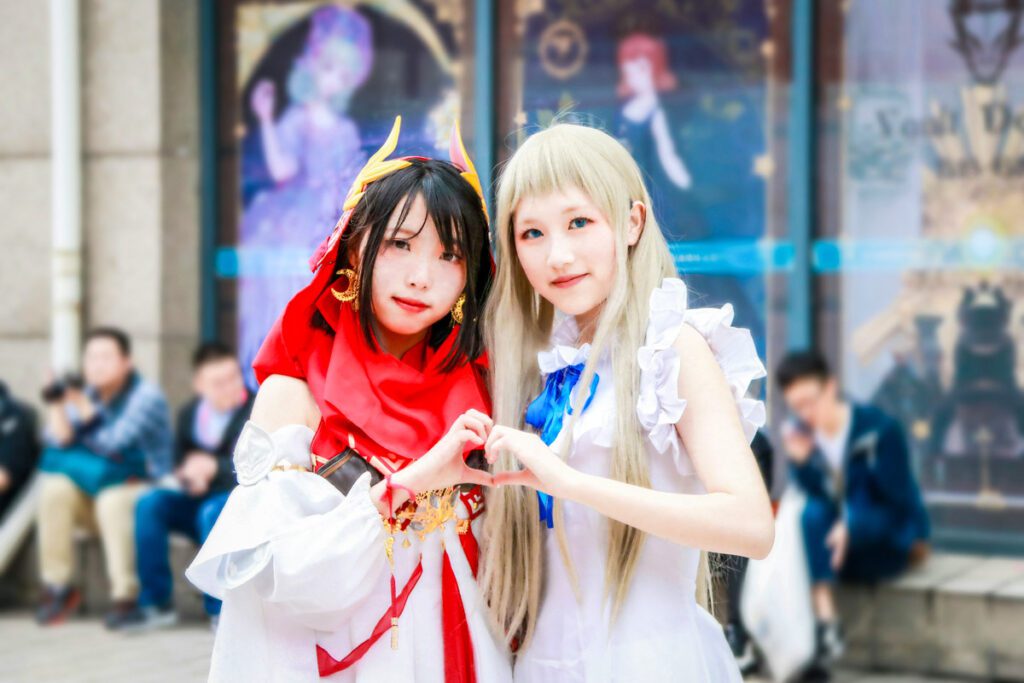
Quick facts
- Nobuyuki Takahashi coined the Japanese term kosupure (from “costume play“) in 1984, though costumes and roleplay have of course existed much longer.
- Japan hosts the annual World Cosplay Summit in Nagoya City and Aichi Prefecture.
Cosplay is the art of not only dressing up as a fictional character, but bringing that character to life. Cosplayers often hand-make their own costumes, displaying creativity along with skills like sewing, painting, sculpting, and even welding.
Though Japan doesn’t get credit for inventing cosplay, it has strong ties to Japanese pop culture, anime, and manga. Cosplay is now a popular hobby around the world.
Interesting Note: We’re certainly not experts on cosplay, but think it’s worth mentioning that not all the young people you see in Japan who appear to be in costume are cosplayers. For example, in the Harajuku neighborhood of Tokyo, elaborate, doll-like outfits are common among young women and teenage girls, but this type of fashion is not necessarily cosplay because it isn’t depicting a character.
36. Kawaii culture
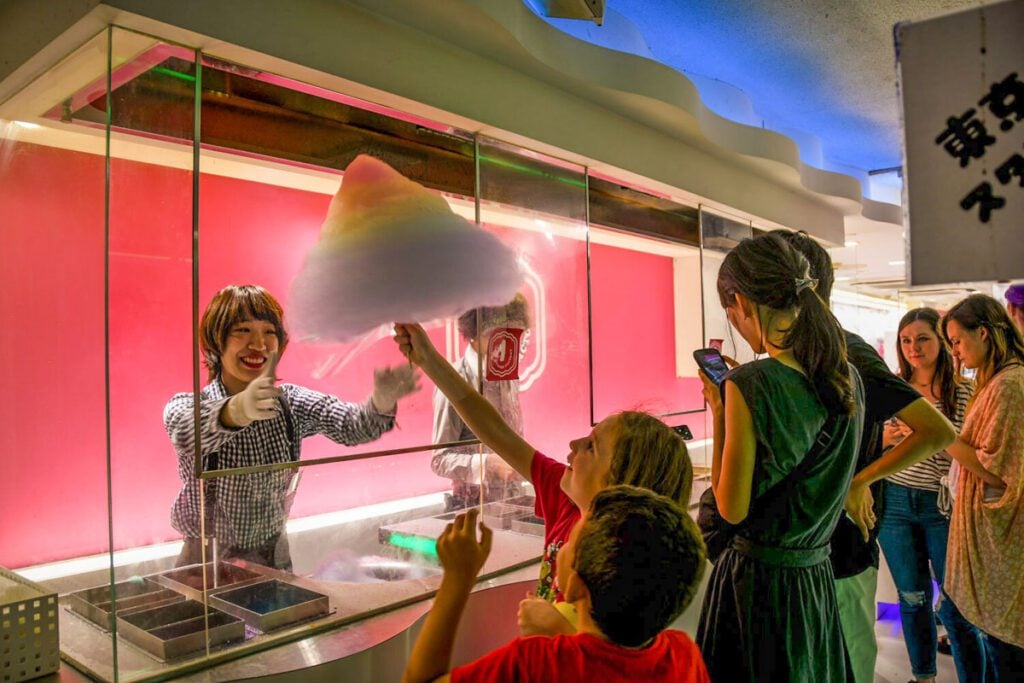
Kawaii is the Japanese word for “cute”, and you don’t have to spend a long time in Japan to realize just how big the kawaii culture is.
The best place in the country to experience kawaii culture is Harajuku. This lively neighborhood in Tokyo is the beating heart of Japan’s youth culture and the essence of kawaii. Think rainbow-colored foods, themed cafes, and sweets on sweets, from crepes and bubble tea to animal-shaped donuts and cotton candy.
38. Samurai and Ninjas
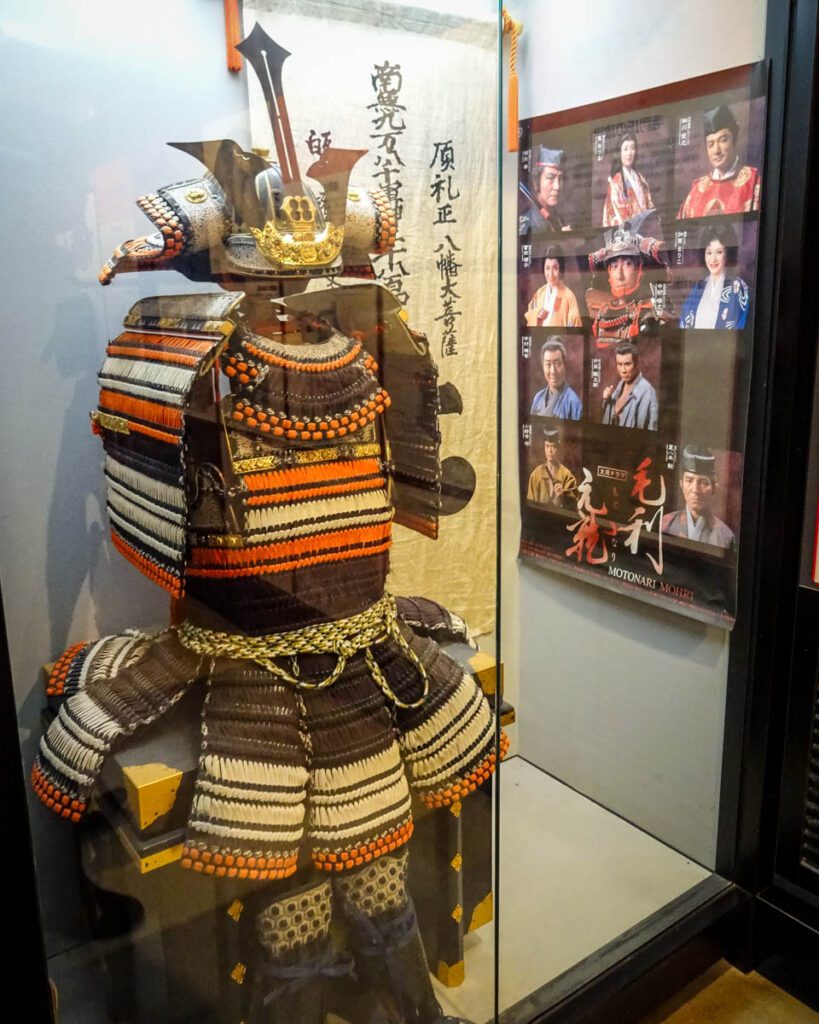
Quick facts
- Samurai were an elite class of skilled, highly-trained warriors from wealthy families.
- Ninjas were spies who came from all levels of society and were experts in stealth.
- There are no longer samurai or ninjas active in Japan today.
Samurai and ninjas hold an almost mythical status in the US, but they’re both very real and important parts of Japanese history.
Samurai rose to power in the 12th century and remained the ruling class in Japan until the Meiji Restoration of 1868. They lived by a code known as bushido, “the way of the warrior”. Bushido emphasized the honor, discipline, and stoicism for which Samurai are famous.
Ninjas, on the other hand, weren’t bound to bushido. They were able to employ techniques that would have dishonored samurai, but which made ninjas invaluable spies. Folklore and even historical accounts often embellish ninjas as having supernatural powers, but in fact they mainly gathered counterintelligence.
This of course is a very condensed and generalized explanation (we’re by no means historians!). There are lots of places in Japan where you can learn more about these two fascinating groups:
- Kyoto Samurai Ninja Museum: interactive, family-friendly exhibits and English tours.
- Kakunodate: well-preserved Edo period village once home to 80 samurai families.
- Iga-ryu Ninja Museum: located in Iga Ueno, a historic castle town that hosts an annual ninja-themed festival.
38. Weird TV Shows
Japan is notorious for game shows and variety segments that range from bizarre to downright disturbing. Contestants compete in challenges that are often distressing or humiliating, frequently facing physical punishment for failure.
One of the first to gain international attention was the obstacle-course game show Takeshi’s Castle. You might know it as Most Extreme Elimination Challenge, or “MXC”. Though the American parody dubbed over the Japanese with its own absurd script, this was a real show that inspired popular shows like Wipeout and American Ninja Warrior.
39. Calligraphy
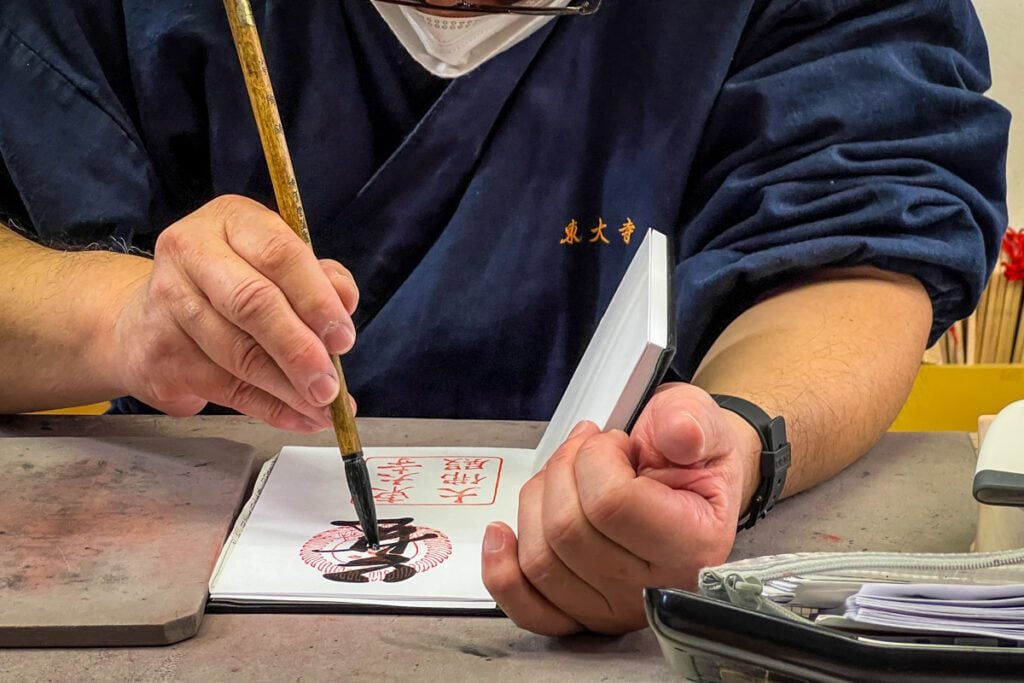
Quick facts
- Calligraphy came to Japan from China in the 6th century, predating written language in Japan.
- The Japanese art of ink and brush writing on paper is called shodo, meaning “way of writing”.
Calligraphy, or shodo as it’s known in Japan, has been taught and practiced for centuries as a form of art, communication, and meditation.
If you’re looking for a hands-on cultural experience in Japan, consider taking a shodo class, such as this one in Kyoto. Meet in a family-owned paper shop where you will create your own handmade paper and also learn a bit of calligraphy to make your own Japanese postcard.
40. Koi fish
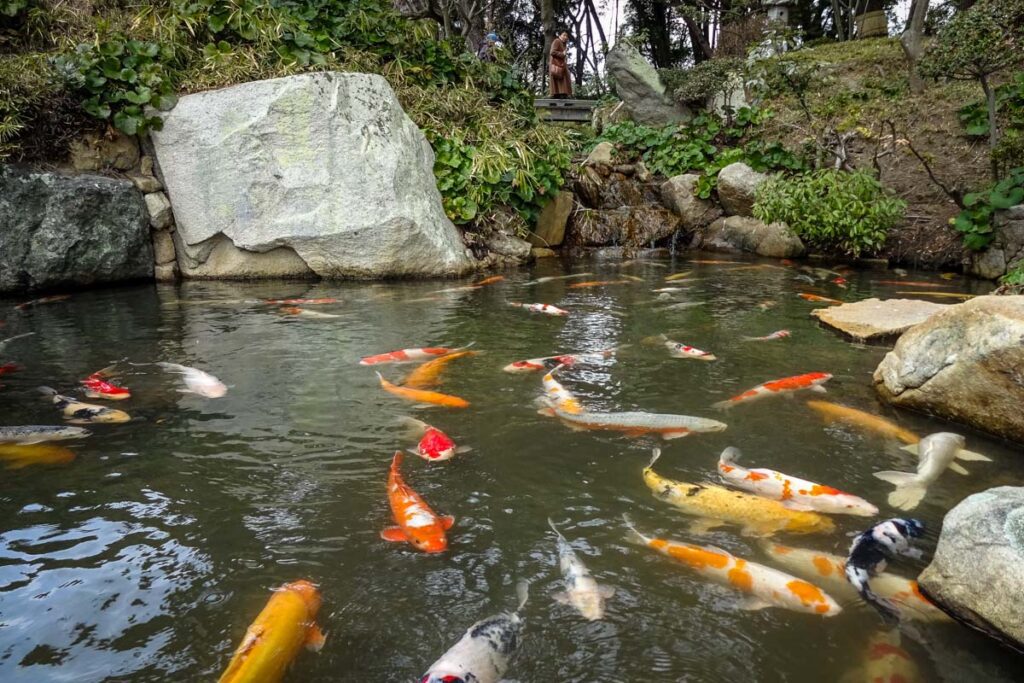
Quick facts
- Koi is a type of colorful freshwater carp found in many Japanese gardens and ponds.
- Koi average about 3 feet in length when fully grown.
- The oldest recorded koi fish lived for 226 years.
- The most expensive koi fish on record sold at auction for ¥200 million ($1.8 million USD) in 2017.
Originally introduced to Japan for food, koi are now bred for ornamental purposes. Along with their aesthetic appeal, koi symbolize good fortune. They are often kept as pets in outdoor ponds, as well as decorative additions to Japanese gardens and shrines.
Bonus: Things Japan isn’t famous for (amongst foreigners) but should be…
Nature and hiking
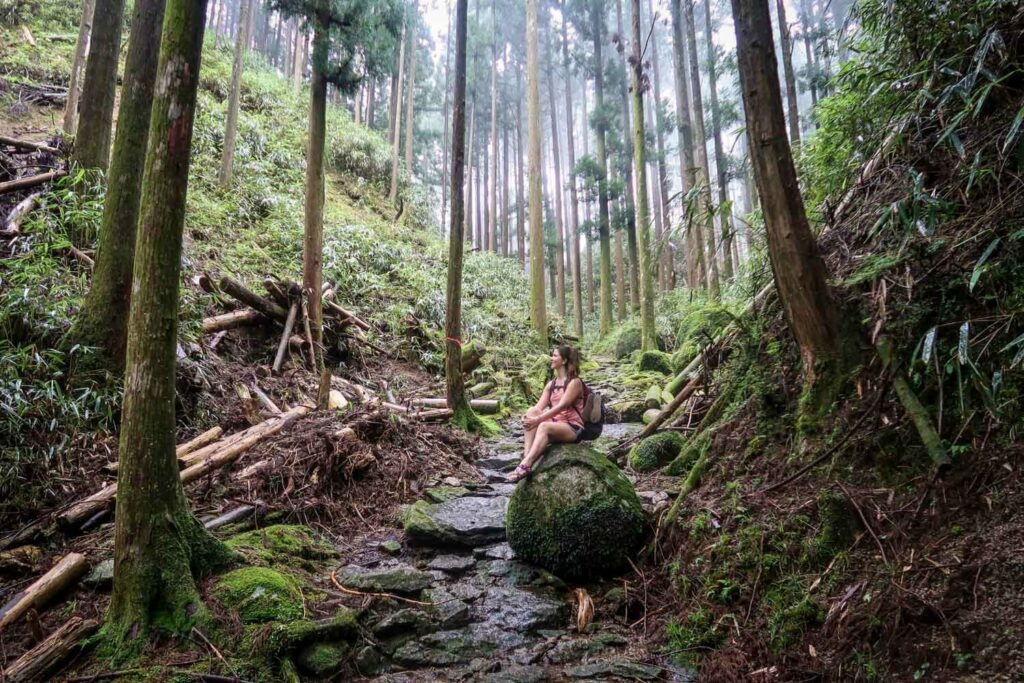
Despite having some of the largest and busiest cities in the world, Japan has so much nature to explore, especially in the mountains. If you love nature, hiking, and out-of-the-ordinary experiences, then Japan should definitely be on your radar!
Kumano Kodo
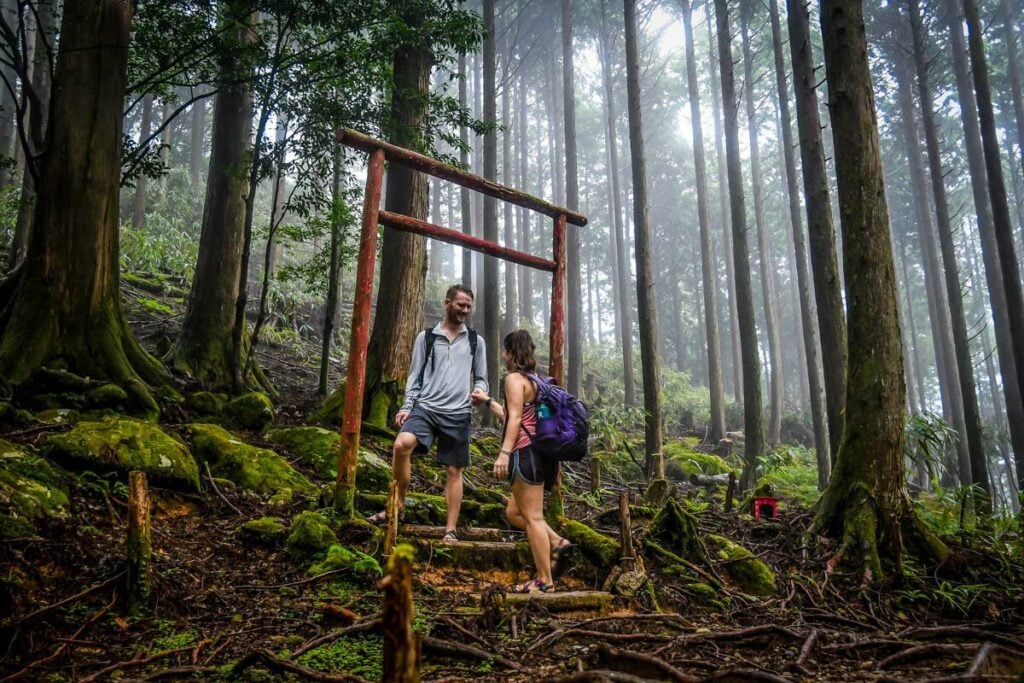
Many people have heard of the Camino de Santiago in Spain, but few know of the sister trail, which is located in Japan.
The Kumano Kodo is an ancient pilgrimage trail that weaves through thickly forested mountains and brings hikers past shrines hidden deep in the woods.
Hikers spend the nights at homestays in remote villages, showing them a different side of Japan than most tourists ever see.
Hiking the Kumano Kodo trail is one of our very favorite things we’ve done in Japan. It is one of the most unique and authentic experiences you can have, so we love recommending it to other travelers!
Nakasendō Trail
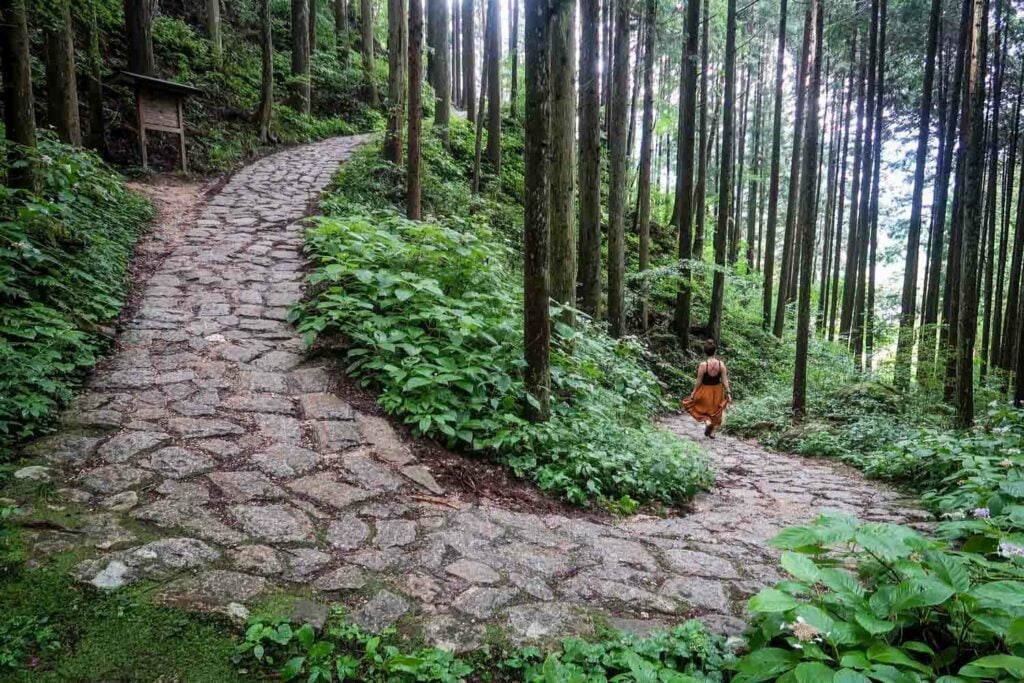
The Nakasendō Trail is an ancient route that spanned more than 330 miles to connect Kyoto and Tokyo and was used in the Edo Period. While modern development has taken over many portions of the trail, there are still a few sections that remain more or less in their original form and can still be walked.
One of the most popular sections is in the Kiso Valley and runs between the small towns of Tsumago and Magome.
We have an in-depth guide to hiking the Nakasendo Trail, including where to stay, what to pack, and can’t-miss stops along the route.
Tateyama Kurobe Alpine Route
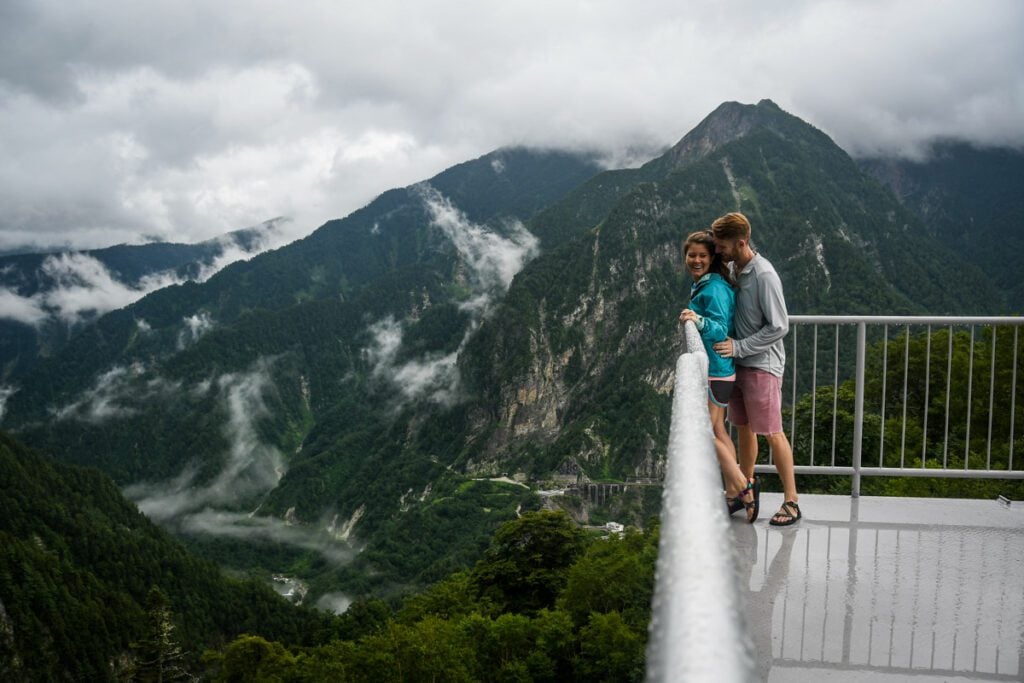
If you’re not up for a hike like Kumano Kodo or Nakasendo Trail but still want to witness the majesty of Japan’s untouched natural landscapes, this might just be your answer.
Known as the Roof of Japan, the Tateyama Kurobe Alpine Route is a sightseeing mountain traverse where passengers take 8 different modes of transportation, such as a cable car and a ropeway, to travel from one side of the Kita Japanese Alps to the other.
You’ll travel through lush green valleys and past a few of the highest peaks in Japan. Each season on the alpine route is a completely different experience. In the springtime, there is a massive snow wall up to 20 meters tall, while in autumn the fall foliage is on display.
You can complete the entire route in one day, but if you have extra time (and money) you can stay at the highest hotel in Japan, Hotel Tateyama.
Quaint rural villages
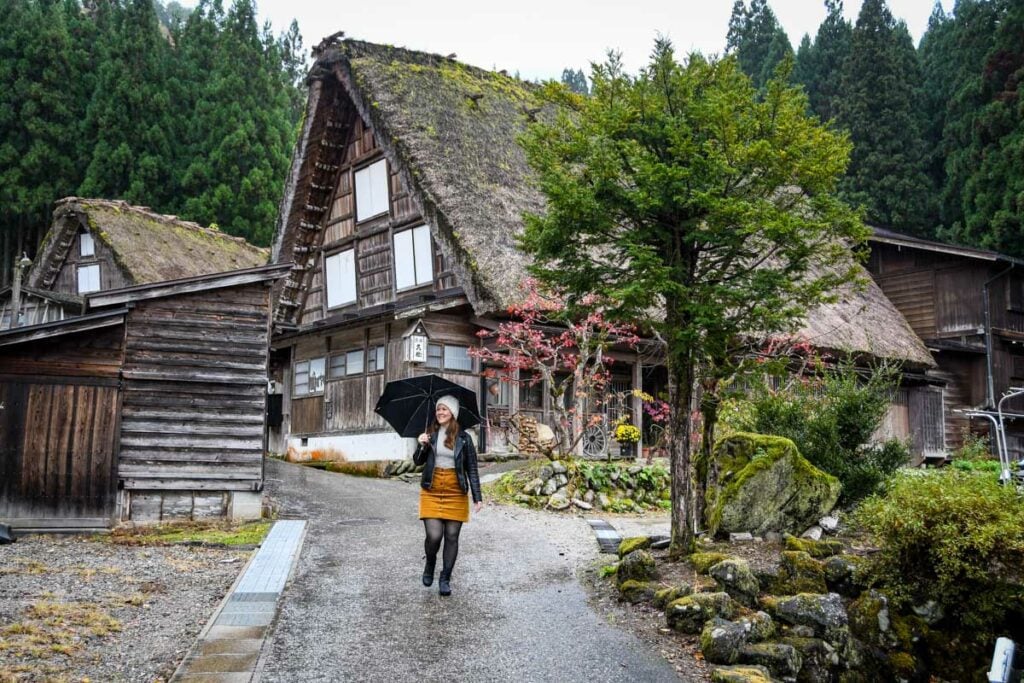
Most people know Japan mainly for its big cities, such as Tokyo and Osaka. But if you like to get off the beaten path, you’ll find the countryside dotted with charming rural villages that will steal your heart.
Shirakawago
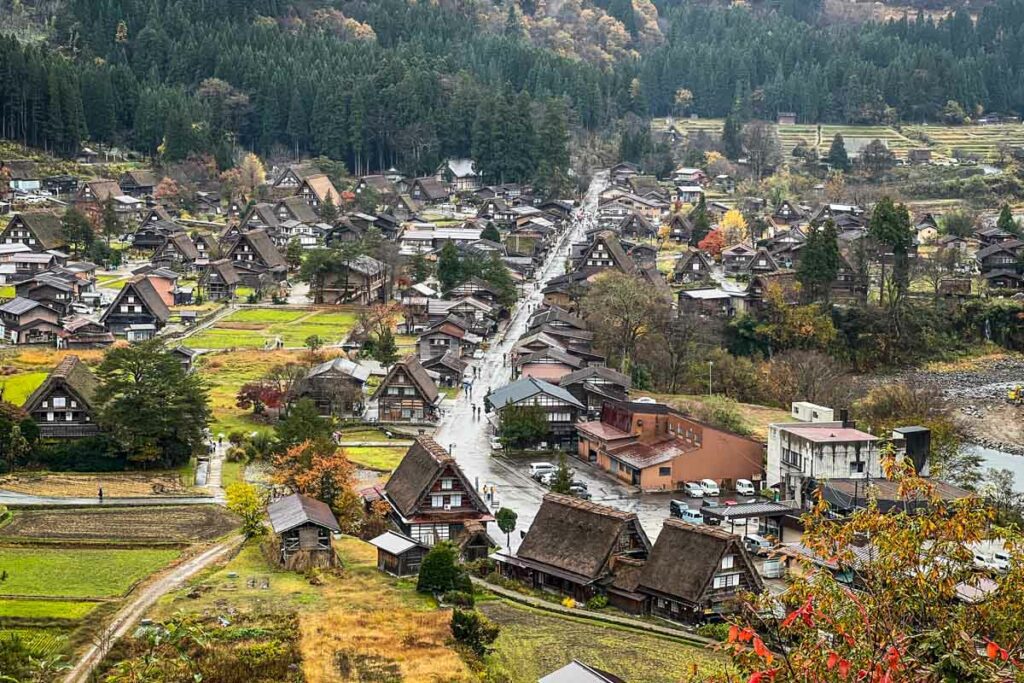
Situated high in the Japanese alps in northwest Gifu prefecture, Shirakawa-go is known for its clusters of thatched roof homes nestled amongst picturesque landscapes.
It is one of the most popular traditional Japanese villages to visit, and for good reason. Not only is it stunning, but there’s a surprising number of things to do in Shirakawa-go.
Though touristy, a visit to Shirakawa-go will give you a good example of traditional Japanese architecture and rural living. But if you get a rental car in Japan, there are many more less-touristy villages to discover.
Beaches
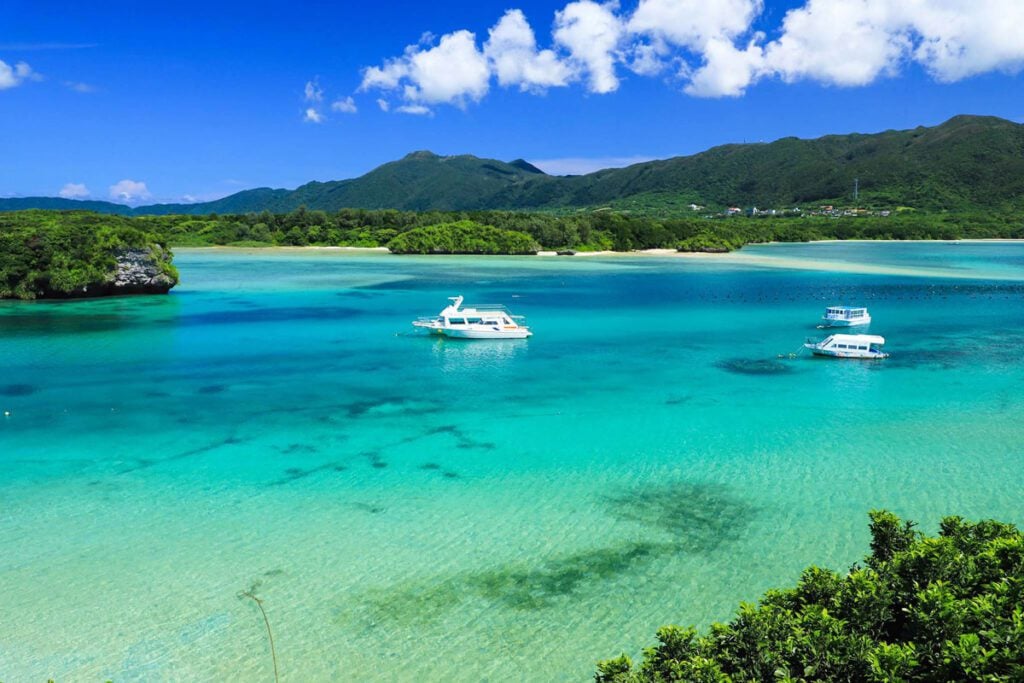
When you imagine relaxing on the sand with a fruity cocktail in hand, you probably think of places like Mexico, Hawaii, Thailand, or the Philippines.
But with about 34,000 km of coastline (~21,126 miles), you might want to consider Japan for your next beach vacation!
Here are some beach destinations in Japan to put on your radar:
- Okinawa: powdery white sand beaches and premier scuba diving in some of the clearest waters in the world
- Kamakura: sand and surf with Mount Fuji views, accessible as a day trip from Tokyo
- Wakayama: fresh seafood and beautiful beaches you can visit on a day trip from Osaka
Round up of things Japan is famous for
Here’s a recap of what Japan is most famous for (in no particular order) so you can see it all in one place.
- Onsens
- Fuji
- Ramen
- Sumo
- Kimono
- Ryokan
- Theme restaurants
- Shinkansen
- Vending machines
- Matcha
- Convenience stores
- Sake
- Geisha
- Izakaya
- Shibuya Crossing
- Autumn leaves
- Manners
- Safety
- Capsule hotels
- Arcades (pachinko)
- Bamboo groves
- Powder skiing
- High-tech toilets
- Purikura
- Atomic bomb
- Cherry blossoms (sakura)
- Shrines & temples
- Big cities
- Manga & Anime
- Origami
- Technology
- Karaoke
- Cosplay
- Kawaii
- Samurai & Ninjas
- Japanese gardens
- Sushi
- Weird TV shows
- Calligraphy
- Koi fish
Bonus: Things Japan isn’t famous for (amongst foreigners) but should be…
- Nature & hiking
- Rural villages
- Beaches
Plan your trip to Japan
After 3 trips (and counting!), we’ve fallen head over heels for Japan—and we’ve created TONS of resources to help you plan your dream trip. Start with our Ultimate Japan Travel Guide and be sure to check out these helpful articles:
- First time? Our Japan Trip Planner walks you through everything you need to know.
- Use our Japan Rail Pass guide to determine if getting a train pass is optimal for your trip.
- Here’s our curated list of the best things to do in Japan—from iconic sights to once-in-a-lifetime experiences.
- Not sure where to go? Our Japan itinerary ideas will help you map it all out.
- Foodies, rejoice! This guide to what to eat in Japan will have you drooling before you land.
- This guide to what to wear in Japan (and what not to wear) will help you blend in.
- Use our ultimate Japan Packing List to make sure you don’t forget anything.
- Before you go, brush up on these essential Japan travel tips (including major do’s and don’ts!).
- Avoid awkward moments by brushing up on Japanese etiquette.
Still have questions? Drop us a comment—we LOVE helping travelers plan unforgettable trips to Japan!
Perfect Japan itinerary
Want the perfect itinerary planned for you?

If you don’t have a ton of time to spend planning your Japan itinerary (or you just don’t find travel planning fun), we’ve got something you might be interested in…
We created the ultimate done-for-you Japan itinerary that is packed full of all sorts of tips we’ve gathered from 3 trips to Japan as well as literally hundreds of hours of research (no exaggeration).
We have both an off-the-beaten path route as well as a classic itinerary that hits the top attractions (perfect for your first visit to Japan!).
Don’t miss your chance to grab our Japan packing list!
This FREE PDF download includes everything you’re going to want to pack for your Japan trip, including what NOT to bring, plus tons of insider tips!
Just enter your email and we’ll immediately send you access instructions!
Save this article on Pinterest for later!
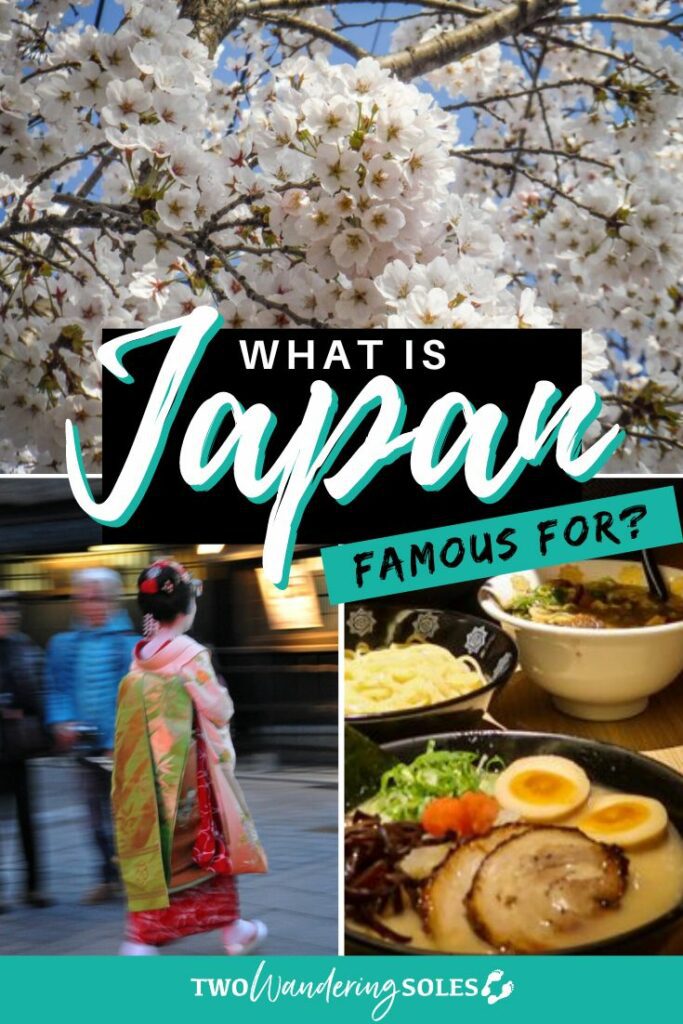
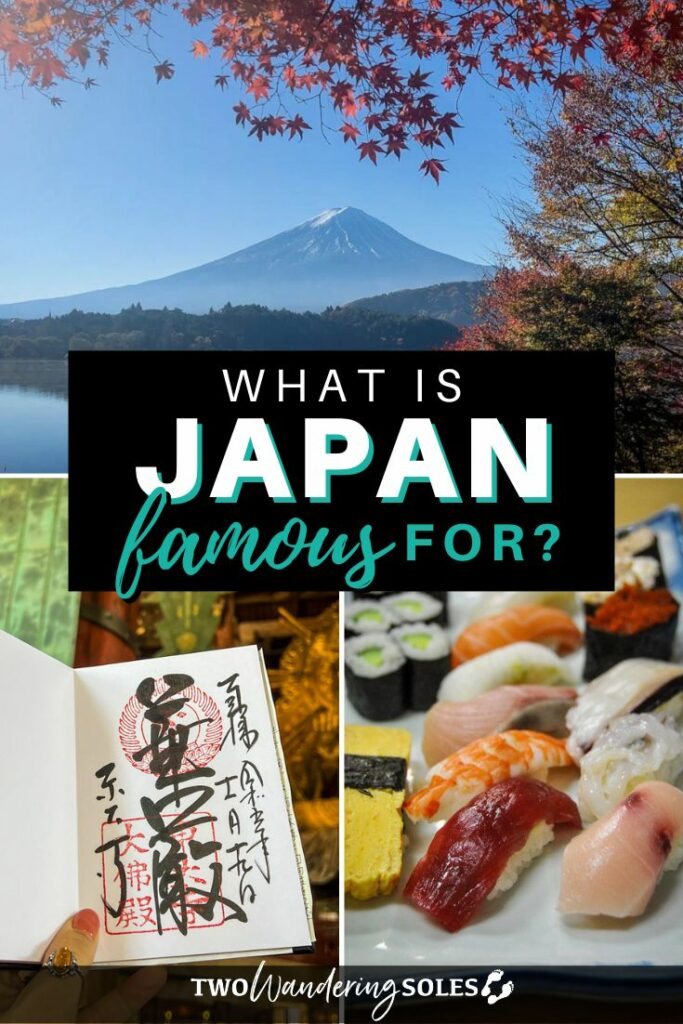
We want to hear from you!
Did anything on this list of what Japan is most famous for surprise you? Is there anything you think Japan should be famous for that foreigners don’t usually know about? Let us know in the comments below!


A friend recently reported the modern Geisha has become the most elusive of Japans tourist sights more so than the proverbial “Yeti or Lochness monster”
I recall my memory of sighting this most beautiful and elusive of sights: – The Geisha
As a young man in the mid 1960’s I visited Japan, we completed an extended tourist circuit together with many journeys on the then prototype Shinkansen train from Tokyo to Osaka. As a group we stayed in the Gion district of Kyoto. It being pre-mobile phone and the spread of the; ‘look at me ma, I’ve a photo of a geisha’ Instagram era, we had no problem with meeting the girls meiko and geiko / full geisha. Being healthy young men there were many occasions we met the girls when they were either exiting taxis or going to from work. Although appearing shy and not immediately communicative, they were eventually forthcoming and allowed us some photo opportunities laughing at our faltering attempts to chat them-up in Japanese. It appears with the advent of commerce, times have changed: – not always for the better.
(Memories of a bygone age). Th J.
Find the quintessence of India with ERCO Travels. A journey unlike any other is promised by our carefully planned India tours.
Golden Triangle Tours offers the best-selling Golden Triangle tour packages in India. Come and discover these incredible cities of India with our carefully planned and custom-tailored packages. We are best because we know what a traveler anticipates and more than that we know what it takes to satisfy them.